Kelly Jensen's Blog, page 109
July 13, 2014
Hardcover to Paperback Redesigns: 7 To Consider
Are you ready for another round of YA design changes? Here's a look at seven books -- eight, actually, since one is a series redesign -- that will be getting new designs in their paperback incarnations. Some of these are great redesigns and others aren't as great as the original looks.
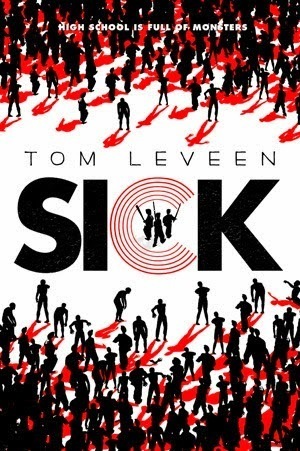
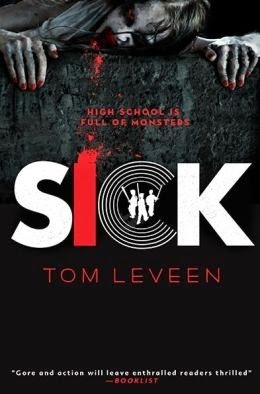
Sick by Tom Leveen is getting a new look in paperback that doesn't do it better nor worse than the original. This is a zombie apocalypse story, set in a high school. The original cover on the left gets at that pretty well. I love the fact it's only black, red, and white. It's stark, and at the same time, it's a little bit funny (because this book is a little bit funny, even though it's horror). The font for the title works, and I dig how the "C" is in a different font than the rest of the letters, and the three boys wielding weapons are centered within it, somewhat protected but somewhat vulnerable, since a "C" isn't a closed letter. This cover skews on the younger end of YA for me, which isn't necessarily a bad thing, and for younger teen readers who want a zombie story, I think this one is fine. This cover works.
The paperback, available August 26, takes the look in an entirely different direction and yet, it still contains a lot of the original elements. This cover is more stark but still has the red, black, and white as the only colors. Rather than feature the zombie hordes, it features a lone, disgusting zombie at the top. The zombie's mouth is dripping blood right into the "I" of "Sick," which is kind of a neat effect. But I wonder: why is the zombie wearing nail polish? That's not blood; that's polish. Would a once-alive, now-zombified person's nail polish look that good? I have some doubts about that.
I appreciate that the cover kept the "C" the same as it was on the original image, with the boys in the middle. The tag line stayed exactly the same, though the paperback features a pull quote from one of the trade reviews: "Gore and action will leave enthralled readers thrilled." I think that quote actually grounds the cover a bit, giving it -- and the bloody letter -- an older and edgier look than the paperback. What really separates the two covers, though, is that the original doesn't give a huge indication this is a zombie story. It tells you something bad is going on, but the figures aren't perfectly clear in terms of what they are; you could guess, but it's not super obvious to the casual reader or browser. In the paperback copy, you know pretty well that the sick creatures are zombies.
Neither cover does it better for me. They're built for different readerships: the first probably for those who'd want a lighter zombie romp and the second for those who are seeking a ZOMBIE STORY.
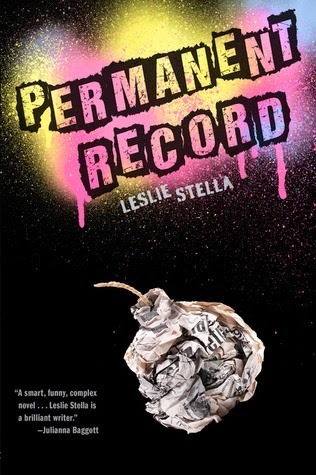

Leslie Stella's Permanent Record is a book I talked about a little over a year ago when a few of us did a read along to Robert Cormier's The Chocolate War, as it's a great read alike. The original cover, though, would not tell you that, nor would it tell you anything, really, about the content of the story. Is it a book about tagging? Graffiti? About paper bombs? Explosions? Even the blurb on the cover indicates nothing: "A smart, funny, complex novel . . . Leslie Stella is a brilliant writer." To the average browser, this means nothing. To even the more well-read, that blurb tells you nothing except it's supposed to be a smart, funny, and complex book. But what is it?
While I think the cover doesn't say anything, it's still an attractive cover. I think it almost works in making someone pick it up because they'll be compelled by the image to find out what it is about. It's ultimately a story about fitting in and about bullying, and it's contemporary realistic. The paper bomb on the cover fits with a part of the story, and the title, Permanent Record, is about Badi, the main character.
The paperback edition of Permanent Record, available August 14, is a slight improvement on the original in that it grounds the story a bit more with a genre. You know it's going to be a realistic novel because it features the lower-half of a trio of real people. It looks like so many other realistic YA titles out there that use stock images of people. I'm not entirely sure, though, I understand this particular stock image. The kids look like they're going camping, not attending school deep inside Chicago proper. What's interesting, though, is it looks almost like the two boys in the picture are people of color -- it's interesting because that's a rarity but, unfortunately, we don't get to see their faces to know if they really are. And since this is a story about a person of color, it would have been awesome to see that head-on. The font for the title, as well as Stella's name, are a marked improvement from the hardcover. It looks like the blurb is gone from the paperback, as well.
For me, the winner is the paperback in this round. It looks more polished and tells a little more about the book itself.
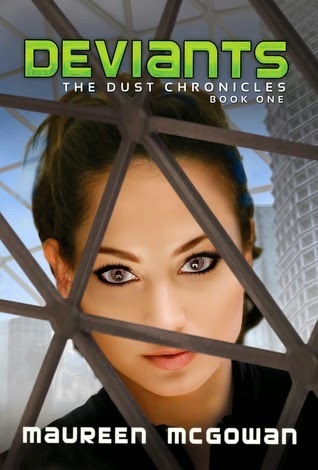
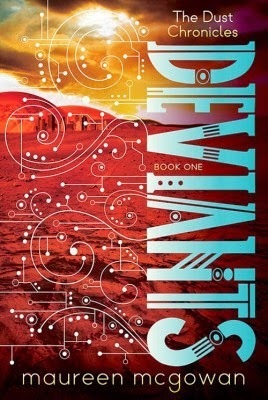

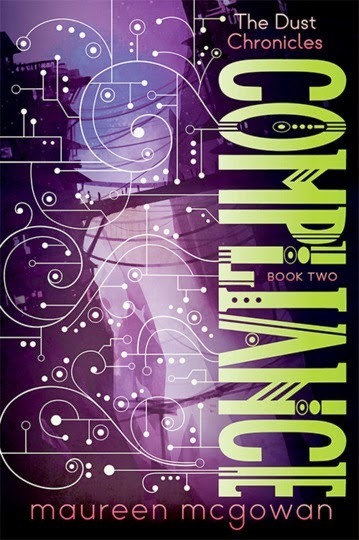
Maureen McGowan's "The Dust Chronicles" series, which is a trilogy comprised of Deviants, Compliance, and Glory, got easily one of the best makeovers when the third book was published last month. Gone are the somewhat cheap, young images of the original look. They've been replaced with covers that look fancy and much more like a compelling dystopian world. I really don't have a whole lot to comment on beyond saying that this is a marked improvement in cover design and it actually piques my curiosity in the series.
All of the redesigns of this one are available now.
Interestingly, this series, as well as Permanent Record, are titles published by Amazon's YA imprint. Part of me wonders if when they began this publishing arm, they didn't quite have a grasp on cover design. Because now that they're a little deeper into the territory, they're doing a better and better job (have you seen this great cover for Gwenda Bond's forthcoming Girl on a Wire? It's outstanding).
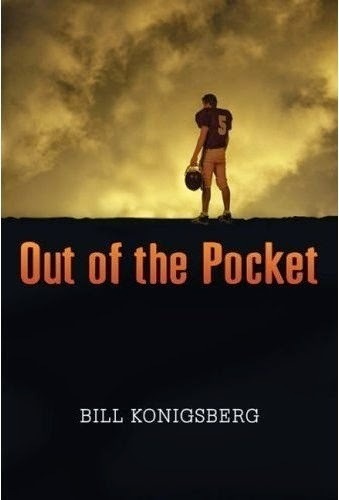

I read Bill Konigsberg's Out of the Pocket way back when it came out in 2008. I loved this book then and it's still one I think about all the time. It's about a football player in southern California who also happens to be gay. No one knows that yet, except his best friend. But when his best friend doesn't keep a lid on it, the story leaks and suddenly, he's in the spotlight not just with his team, but with the whole country. It's a well-done story about sexuality and football and what it means to be a gay football player when that's far from an easy place to be because of what football is culturally.
The original cover for this one depicts that it's a football story. It's quite similar to another book that came out around the same time: Tim Tharp's Knights of Hill Country. It's not a bad cover by any means, and it speaks to those readers who like a good football book -- and Konigsberg's book fits that bill.
But I have so much love for this paperback cover. Released earlier this year through a different publisher than the hardcover, the paperback gets at not only the fact this is a book featuring sports and athletics, but it really nails that it's a story about one boy who happens to be an athlete. He looks rugged and tough, but there's something in his expression that also renders him a bit sensitive, like there's something beneath that surface begging to be drawn out.
The paperback looks like the kind of cover that would speak to a much wider range of readers than the hardcover because it's not limiting itself to readers who want a book about sports. It still says sports story to me, but that's not all that it says. It's a winner.


I used to ask my teen readers about book covers a lot as a means of finding out whether what I was thinking about covers and cover design was in line with what they were thinking. One particular cover I asked about a few years back was Siobhan Vivian's Not That Kind of Girl. It was a cover my girls in particular disliked because it didn't fit the story at all -- to them, it said this was a romance, rather than a feminist novel about a girl who happens to experience a little romance in the story. The "just about to kiss" was a trend then, and Vivian's cover looked quite a bit like the one on Sarah Mlynowski's Ten Things We Did.
During a lock in one night, I had my girls redesign covers of books they read and they thought were misleading. Vivian's was one they chose to redesign, and what's most interesting to me now is how close their imagined design was to the newly repackaged cover of Not That Kind of Girl, coming out July 29. Rather than play up the romance, the new cover plays up the fact this is a story about a girl who doesn't see herself like the other girls around her (and yes, that annoying aspect of "not that kind of girl" is purposeful and undermined in the story because this is a whip-smart feminist novel). This new cover captures that to a T, with one girl singled out among the ranks of her classmates who appear to be the same, even though they are the same only in clothing.
While I think the outfits may make the girls in the background look a little corporate and maybe a little beyond high school age, the girl at the center is one of the rare times I've seen a model on a YA cover that screams teen girl to me. Often, they look like 20-somethings, rather than teens. This girl, though? She's a teenager.
I love, too, how this cover fits nicely with Vivian's cover for The List. It's a really strong repackaging and I hope when Vivian's other two novels are recovered, they follow in this trend. It's a good one.


The original print run for Katie Cotugno's How to Love surprised me when I looked it up. It was much bigger than I thought. This is a book I'd heard about and have a review copy of (still) but it's one that I saw few reviews of that compelled me to pick it up. I actually saw few reviews period, though I have been fascinated in the publication journey of this particular book, since it's a partial Alloy product.
The design for the hardcover might have been one of the first font-driven, image-only covers to publish before the trend took full-hold of the YA world. It's clean, but it's not particularly unique nor compelling. It's the kind of cover that tells you there's romance -- the title and the heart alone would do that -- and it looks like the kind of cover with great crossover appeal to adult readers.
But maybe the font-driven, image design isn't for all books, since this is going the opposite direction in its paperback makeover, due out next March. The paperback returns to the stock image, this time of a couple not just kissing but in full-out holding each other mode. I have to say I'm not really paying a lot of attention to the couple though (which, they don't look like teenagers, do they?). I'm too distracted by that obnoxious wallpaper in the background of this cover. Where are they? Who made that wallpaper choice?
Does this girl have really long arms, too? The way her hand is able to reach around his neck and clasp onto her opposite shoulder makes me think she has the longest arms in the world. Or maybe that guy has the world's smallest neck.
Neither of these covers really does it for me, though I think if I had to pick one, it'd be the original cover. The paperback, save the wallpaper, is really generic.

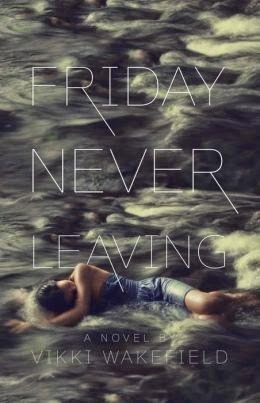
The last cover in this roundup worth talking about is the one for Vikki Wakefield's Friday Never Leaving, a book that came out last year and not enough people talked about (I enjoyed it a lot and am sad more people have not picked it up).
This is an Australian import which got a new look in America in the hardcover on the left. It's a girl underwater, but unlike a lot of books that have the girl underwater look going for them, that's actually an important part of the story. But as it's done on the cover here, I don't know that it's compelling, and I don't think the very thin, very spread out font for the title helps much. The whiteness of the title fades out, and more, Wakefield's name is very easy to miss since it's so tiny. While I think the cover says it's a literary novel -- and it is -- I don't think the cover is particularly appealing. It's understated to a point where it just fades into the shelves and every other book out there.
The paperback of Friday Never Leaving will be available September 9 and . . . it looks like a cover that missed the "girls laying in water" trend from a few years ago. It's dated. But what's worse is that it's also really unattractive in its color palate. It looks dirty, rather than polished. The girl would actually melt into the water if it weren't for her odd placement on the cover, just below the bottom of "Leaving." The font here is still not great, as it's too thin and too easily overlooked, and while Wakefield's name got larger in the paperback, it's still very easy to miss, as it fades into the image.
It looks generic and forgettable.
What's interesting is that the original cover for Wakefield's novel from Australia, as well as the UK edition, are so good:
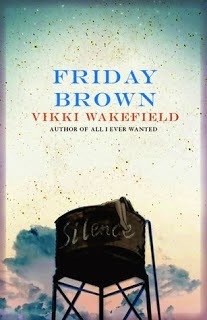
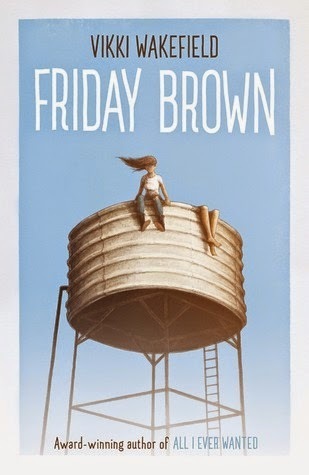
These covers stand out, they're fresh, and they're relevant to the story itself. They're much more eye-catching than what's been created in the US. I can't help but wonder if the bland designs have been part of why I haven't seen more talk about this book -- it's easy to overlook and easy to write off.







 Related StoriesHardcover to Paperback: 5 YA Changes to ConsiderCover Double, Triple, and (formerly) Quadruple: Risk Taking and Cover DesignHardcover to Paperback: YA Redesigns to Consider
Related StoriesHardcover to Paperback: 5 YA Changes to ConsiderCover Double, Triple, and (formerly) Quadruple: Risk Taking and Cover DesignHardcover to Paperback: YA Redesigns to Consider


Sick by Tom Leveen is getting a new look in paperback that doesn't do it better nor worse than the original. This is a zombie apocalypse story, set in a high school. The original cover on the left gets at that pretty well. I love the fact it's only black, red, and white. It's stark, and at the same time, it's a little bit funny (because this book is a little bit funny, even though it's horror). The font for the title works, and I dig how the "C" is in a different font than the rest of the letters, and the three boys wielding weapons are centered within it, somewhat protected but somewhat vulnerable, since a "C" isn't a closed letter. This cover skews on the younger end of YA for me, which isn't necessarily a bad thing, and for younger teen readers who want a zombie story, I think this one is fine. This cover works.
The paperback, available August 26, takes the look in an entirely different direction and yet, it still contains a lot of the original elements. This cover is more stark but still has the red, black, and white as the only colors. Rather than feature the zombie hordes, it features a lone, disgusting zombie at the top. The zombie's mouth is dripping blood right into the "I" of "Sick," which is kind of a neat effect. But I wonder: why is the zombie wearing nail polish? That's not blood; that's polish. Would a once-alive, now-zombified person's nail polish look that good? I have some doubts about that.
I appreciate that the cover kept the "C" the same as it was on the original image, with the boys in the middle. The tag line stayed exactly the same, though the paperback features a pull quote from one of the trade reviews: "Gore and action will leave enthralled readers thrilled." I think that quote actually grounds the cover a bit, giving it -- and the bloody letter -- an older and edgier look than the paperback. What really separates the two covers, though, is that the original doesn't give a huge indication this is a zombie story. It tells you something bad is going on, but the figures aren't perfectly clear in terms of what they are; you could guess, but it's not super obvious to the casual reader or browser. In the paperback copy, you know pretty well that the sick creatures are zombies.
Neither cover does it better for me. They're built for different readerships: the first probably for those who'd want a lighter zombie romp and the second for those who are seeking a ZOMBIE STORY.


Leslie Stella's Permanent Record is a book I talked about a little over a year ago when a few of us did a read along to Robert Cormier's The Chocolate War, as it's a great read alike. The original cover, though, would not tell you that, nor would it tell you anything, really, about the content of the story. Is it a book about tagging? Graffiti? About paper bombs? Explosions? Even the blurb on the cover indicates nothing: "A smart, funny, complex novel . . . Leslie Stella is a brilliant writer." To the average browser, this means nothing. To even the more well-read, that blurb tells you nothing except it's supposed to be a smart, funny, and complex book. But what is it?
While I think the cover doesn't say anything, it's still an attractive cover. I think it almost works in making someone pick it up because they'll be compelled by the image to find out what it is about. It's ultimately a story about fitting in and about bullying, and it's contemporary realistic. The paper bomb on the cover fits with a part of the story, and the title, Permanent Record, is about Badi, the main character.
The paperback edition of Permanent Record, available August 14, is a slight improvement on the original in that it grounds the story a bit more with a genre. You know it's going to be a realistic novel because it features the lower-half of a trio of real people. It looks like so many other realistic YA titles out there that use stock images of people. I'm not entirely sure, though, I understand this particular stock image. The kids look like they're going camping, not attending school deep inside Chicago proper. What's interesting, though, is it looks almost like the two boys in the picture are people of color -- it's interesting because that's a rarity but, unfortunately, we don't get to see their faces to know if they really are. And since this is a story about a person of color, it would have been awesome to see that head-on. The font for the title, as well as Stella's name, are a marked improvement from the hardcover. It looks like the blurb is gone from the paperback, as well.
For me, the winner is the paperback in this round. It looks more polished and tells a little more about the book itself.




Maureen McGowan's "The Dust Chronicles" series, which is a trilogy comprised of Deviants, Compliance, and Glory, got easily one of the best makeovers when the third book was published last month. Gone are the somewhat cheap, young images of the original look. They've been replaced with covers that look fancy and much more like a compelling dystopian world. I really don't have a whole lot to comment on beyond saying that this is a marked improvement in cover design and it actually piques my curiosity in the series.
All of the redesigns of this one are available now.
Interestingly, this series, as well as Permanent Record, are titles published by Amazon's YA imprint. Part of me wonders if when they began this publishing arm, they didn't quite have a grasp on cover design. Because now that they're a little deeper into the territory, they're doing a better and better job (have you seen this great cover for Gwenda Bond's forthcoming Girl on a Wire? It's outstanding).


I read Bill Konigsberg's Out of the Pocket way back when it came out in 2008. I loved this book then and it's still one I think about all the time. It's about a football player in southern California who also happens to be gay. No one knows that yet, except his best friend. But when his best friend doesn't keep a lid on it, the story leaks and suddenly, he's in the spotlight not just with his team, but with the whole country. It's a well-done story about sexuality and football and what it means to be a gay football player when that's far from an easy place to be because of what football is culturally.
The original cover for this one depicts that it's a football story. It's quite similar to another book that came out around the same time: Tim Tharp's Knights of Hill Country. It's not a bad cover by any means, and it speaks to those readers who like a good football book -- and Konigsberg's book fits that bill.
But I have so much love for this paperback cover. Released earlier this year through a different publisher than the hardcover, the paperback gets at not only the fact this is a book featuring sports and athletics, but it really nails that it's a story about one boy who happens to be an athlete. He looks rugged and tough, but there's something in his expression that also renders him a bit sensitive, like there's something beneath that surface begging to be drawn out.
The paperback looks like the kind of cover that would speak to a much wider range of readers than the hardcover because it's not limiting itself to readers who want a book about sports. It still says sports story to me, but that's not all that it says. It's a winner.


I used to ask my teen readers about book covers a lot as a means of finding out whether what I was thinking about covers and cover design was in line with what they were thinking. One particular cover I asked about a few years back was Siobhan Vivian's Not That Kind of Girl. It was a cover my girls in particular disliked because it didn't fit the story at all -- to them, it said this was a romance, rather than a feminist novel about a girl who happens to experience a little romance in the story. The "just about to kiss" was a trend then, and Vivian's cover looked quite a bit like the one on Sarah Mlynowski's Ten Things We Did.
During a lock in one night, I had my girls redesign covers of books they read and they thought were misleading. Vivian's was one they chose to redesign, and what's most interesting to me now is how close their imagined design was to the newly repackaged cover of Not That Kind of Girl, coming out July 29. Rather than play up the romance, the new cover plays up the fact this is a story about a girl who doesn't see herself like the other girls around her (and yes, that annoying aspect of "not that kind of girl" is purposeful and undermined in the story because this is a whip-smart feminist novel). This new cover captures that to a T, with one girl singled out among the ranks of her classmates who appear to be the same, even though they are the same only in clothing.
While I think the outfits may make the girls in the background look a little corporate and maybe a little beyond high school age, the girl at the center is one of the rare times I've seen a model on a YA cover that screams teen girl to me. Often, they look like 20-somethings, rather than teens. This girl, though? She's a teenager.
I love, too, how this cover fits nicely with Vivian's cover for The List. It's a really strong repackaging and I hope when Vivian's other two novels are recovered, they follow in this trend. It's a good one.


The original print run for Katie Cotugno's How to Love surprised me when I looked it up. It was much bigger than I thought. This is a book I'd heard about and have a review copy of (still) but it's one that I saw few reviews of that compelled me to pick it up. I actually saw few reviews period, though I have been fascinated in the publication journey of this particular book, since it's a partial Alloy product.
The design for the hardcover might have been one of the first font-driven, image-only covers to publish before the trend took full-hold of the YA world. It's clean, but it's not particularly unique nor compelling. It's the kind of cover that tells you there's romance -- the title and the heart alone would do that -- and it looks like the kind of cover with great crossover appeal to adult readers.
But maybe the font-driven, image design isn't for all books, since this is going the opposite direction in its paperback makeover, due out next March. The paperback returns to the stock image, this time of a couple not just kissing but in full-out holding each other mode. I have to say I'm not really paying a lot of attention to the couple though (which, they don't look like teenagers, do they?). I'm too distracted by that obnoxious wallpaper in the background of this cover. Where are they? Who made that wallpaper choice?
Does this girl have really long arms, too? The way her hand is able to reach around his neck and clasp onto her opposite shoulder makes me think she has the longest arms in the world. Or maybe that guy has the world's smallest neck.
Neither of these covers really does it for me, though I think if I had to pick one, it'd be the original cover. The paperback, save the wallpaper, is really generic.


The last cover in this roundup worth talking about is the one for Vikki Wakefield's Friday Never Leaving, a book that came out last year and not enough people talked about (I enjoyed it a lot and am sad more people have not picked it up).
This is an Australian import which got a new look in America in the hardcover on the left. It's a girl underwater, but unlike a lot of books that have the girl underwater look going for them, that's actually an important part of the story. But as it's done on the cover here, I don't know that it's compelling, and I don't think the very thin, very spread out font for the title helps much. The whiteness of the title fades out, and more, Wakefield's name is very easy to miss since it's so tiny. While I think the cover says it's a literary novel -- and it is -- I don't think the cover is particularly appealing. It's understated to a point where it just fades into the shelves and every other book out there.
The paperback of Friday Never Leaving will be available September 9 and . . . it looks like a cover that missed the "girls laying in water" trend from a few years ago. It's dated. But what's worse is that it's also really unattractive in its color palate. It looks dirty, rather than polished. The girl would actually melt into the water if it weren't for her odd placement on the cover, just below the bottom of "Leaving." The font here is still not great, as it's too thin and too easily overlooked, and while Wakefield's name got larger in the paperback, it's still very easy to miss, as it fades into the image.
It looks generic and forgettable.
What's interesting is that the original cover for Wakefield's novel from Australia, as well as the UK edition, are so good:


These covers stand out, they're fresh, and they're relevant to the story itself. They're much more eye-catching than what's been created in the US. I can't help but wonder if the bland designs have been part of why I haven't seen more talk about this book -- it's easy to overlook and easy to write off.







 Related StoriesHardcover to Paperback: 5 YA Changes to ConsiderCover Double, Triple, and (formerly) Quadruple: Risk Taking and Cover DesignHardcover to Paperback: YA Redesigns to Consider
Related StoriesHardcover to Paperback: 5 YA Changes to ConsiderCover Double, Triple, and (formerly) Quadruple: Risk Taking and Cover DesignHardcover to Paperback: YA Redesigns to Consider
Published on July 13, 2014 22:00
This Week in Reading: Volume II

I tried out "This Week in Reading" last week as a way to talk about both the books and the links I've come across in the past week, and I'm bringing it back again this week. It's a snapshot into the books that showed up, the things I read, and the things I've been thinking about.
Lauren Oliver's Rooms -- her first adult novel -- is the only book that came to me this week I didn't buy. I'm interested to see how her adult novel holds up, especially since her last couple of YA titles haven't impressed me a whole lot. Maybe this one will do the job.
I bought two books this week: Carrie Harris's Demon Derby and the ebook edition of Crissa-Jean Chappell's Total Constant Order (tracking down this backlist title in print that isn't a used copy was not very easy). I started in on the Chappell title last night and I'm really looking forward to getting into Demon Derby soon since I know it'll be the kind of fun reading I appreciate from Harris.
I think sometimes we forget how great those fun books can be.
It's been a rough week here, and in the midst of it, I put in a huge book order for myself that should arrive next week. In addition to that, though, I find when things get rough, the only way I can get myself through is by reading. So I managed to read quite a bit:
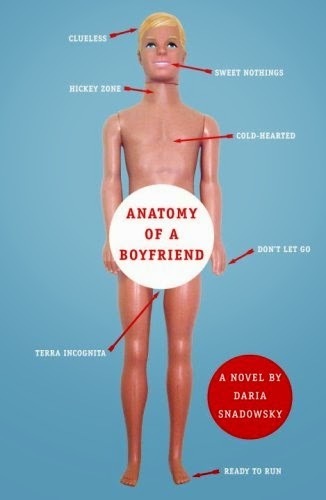

Anatomy of a Boyfriend by Daria Snadowsky: This was a great book about a first love and exceptionally positive of female sexuality. I'll talk more about this one soon, but I'm planning on picking up the sequel very soon. I loved the voice.
Blind by Rachel DeWoskin: I quit this one after 100 pages. While I appreciated what DeWoskin did with her main character's need to describe the world around her as she approaches it (she's blind), the writing itself left a lot to be desired. The story didn't begin in the right place and moved at a glacial pace. At over 400 pages, I couldn't do it when, at page 100, nothing had happened and I had no attachment to the characters at all.


The Empathy Exams by Leslie Jamison: I've been picking at this one for a few months and finally just sat down to finish it. I'm glad I did. I loved this series of essays -- some which connected in terms of recurring characters -- about what empathy looks like and what human emotions connect us and the hows and whys of those connections. My favorite essay in the entire book is available in full online and I encourage it to get a sense of what the book looks like. I'll definitely be reading more essay collections following this. It's an underappreciated medium (and one I found myself loving after reading Eula Biss's Notes From No Man's Land last year).
Sway by Kat Spears (September 16): There was some stuff I liked -- Jesse's voice is good and there are some good relationships -- but as much as I love edgy, dark, boundary-pushing stuff, this one may have gone too far for me to really enjoy. There's a joke about a time during a party that turns into date rape time and it was then I just....even if it was Jesse's character to be so crass, I don't think it's an okay joke. And there's some depictions of fat people in here that rubbed me really wrong. I have a feeling people are going to dislike a lot of other things in this book when more have read it. The cover is terribly misleading; this is no sweet romance.
A few things worth reading from around the internet this week, some book-related and some not:
Kathleen Hale wrote a really thoughtful essay about the Slender Man stabbing that took place not far from where I live. It's about how Slender Man makes for a great scapegoat for the real issues at hand in being a middle school girl. Not easy reading, but really worthwhile for anyone who cares about pre-teen and teenagers, especially girls.
This piece, "Cultivating Curiosity," is about a love of stories and storytelling, over a pure love for words and language. I especially love the part about how a book is two things merging: what you bring to the book and what the book brings to you.
Over at Dear Author, necessary reading relevant to a lot of things I've been thinking and writing about in regards to being a blogger: The "C" in ARC Does Not Stand for "Contract.
I didn't think an essay about friendship would stick with me as much as one did this week titled "Grown Women Don't Need A 'Best Friend'." It stems from Emily Gould's recently released book about adult/millennial friendships but delves into why it's okay not to have a "best friend" if you're an adult woman. I related a lot, and I appreciated -- and believe -- in the idea of different levels of closeless when it comes to my friendships.
Zadie Smith wrote an essay for Oprah about the notion of summer reading and, at heart of the piece, is the notion that there's such a thing as being addicted to books and reading. It's a beautiful piece.
Last week I mentioned the "get organized" series kicking off on tumblr, and a few people have chimed in to talk about the ways they organize their lives, as well as their to-read piles:
I talked about my daily organizational methods, as well as how I organize my reading. Maureen talked in-depth about how she organizes her to-be-read lists (it's so impressive and methodical). Sophie talks about being a bullet journal enthusiast, including tabs in her notebook.
If you want to join in, I know I'd be interested. Just write about how you organize, then send it along via the tag "#get organized" on tumblr or send it my way and I'll share it.







 Related StoriesThis Week in Reading: Volume I
Related StoriesThis Week in Reading: Volume I
Published on July 13, 2014 05:01
July 10, 2014
Reading Report Card: 6 Months into 2014
Last year in December, I took a look at what I'd read that year and broke it down into quantifiable categories. Was I reading more debuts than the year before? Was I reading more male writers than female writers? What about the sort of diversity I was reading, either in terms of authors of color or stories featuring a main character of color?
I've noted this has been a slower reading year for me, and because of that, I thought it would be interesting to take a look at my reading at the half-way point of 2014 and see where I have been and figure out what, if anything, I should be doing better in the second half of the year. As of writing this post, I've read 45 books, or about two books per week. I did not include any of the manuscripts I've read this year (probably between 8 and 10) but rather, books that are available now or will be available before the end of the year.
The entire list of my titles read with how I categorized them is accessible here, if you're curious. I had planned on looking at genre as a key part of my breakdown, but I read mostly realistic fiction for many reasons, and it wasn't surprising that was the bulk of this year's titles already.
Book Audience and Format
Let's look first at the types of books I'm reading in terms of who the general audience is:

One thing I've wanted to do is read more adult books, and I don't think this is too bad so far.
So far, I've read 7 adult books this year and 38 YA books. Of the adult books, one title was non-fiction and of the YA books, one title was non-fiction (or rather, it's a collection of poetry and images, which I'd categorize under non-fiction, rather than fiction in terms of it being like a novel).
Since I'm on format with this, might as well get a look at where my format reading is so far.

The majority of my reading has been fiction this year. I've read 2 graphic novels, one novel in verse, a poetry collection, and one non-fiction title. I separated the last two out in this chart, as opposed to the chart above.
I think I'd like to try to sneak in a little more non-fiction reading this year. Last year, I got to read so much non-fiction, and this year, I have not been reading it much at all. The title I did read was danah boyd's It's Complicated, about teens and their use of technology and the internet. I think picking more titles up in that realm is a goal I've got before the end of the year.
Books by Gender of Author and Main Character
So what about gender? This is of particular interest to me this year with the "Year of Reading Women" campaign. Do I tend toward more female authors or male authors? I haven't been keeping tabs on this this year or spent a lot of time being conscious of this on purpose.
Out of the 45 books I read, there were 47 authors writing them.

I read more females than males this year, roughly 80% to 20%.
And how that translates in terms of the gender of the main characters of the books I've read this year:

This breakdown was very tricky. Part of it was because I had to identify "main character" when the novel was told from more than one point of view. I decided if it was only 2 points of view, I could count both. If it was more than two, I threw it into a catch-all "cast of characters" category; in this instance, all four of those titles featured both male and female voices. The not applicable category went to my poetry collection and the non-fiction title, which didn't have a dominant main character voice (though the poetry collection is geared toward female readers).
The numbers here show I read more female main characters than male (32 compared to 6). Of those female characters, four of the books I read featured 2 female characters each. Interestingly, I haven't read a title this year yet that features two male main characters, but I have read 5 titles that feature a male and a female main character.
Publication Year and Publication Debut
It has been a very slow year for debut novel reading for me. I haven't been seeing as many pop up, and I've definitely not been seeing as many review copies pop up on Edelweiss nor in my mailbox that are debut or speak to me. It may be the case there are many more debut genre novels this year than in the past, which I am less inclined to read than realistic debuts.
Hre's how the debut vs. not a debut titles look. I define debut in the purest sense: first book, period. I don't care if they wrote an adult novel before or self-published a book before. I only looked at debut novels from 2014 -- if a novel was a debut from another year, I did not include it.

Maybe it's not as bad as I thought. Almost 20% of the titles I read were debut novels. I'd like to amp that up in the second half of the year, but it's better than I expected.
I looked, too, at the publication year of the books I'm reading, in order to get a sense of how much backlist I'm reading. Of the 45 books I've read, 6 were not published in 2014. As of this writing, the book I'm reading and the one following it are backlist, which should help those numbers a bit at the end of the year.
Likewise, I looked at the series vs. not a series titles I've read. Of the 45 books, only 4 were from a series. And actually, calling those four books series titles is true, but three of them are stand alone series titles: Biggest Flirts by Jennifer Echols, Dirty Wings by Sarah McCarry, and To All The Boys I've Loved Before by Jenny Han can all be read alone, without context from previous/forthcoming titles. Sex Criminals I threw into the series category, though. I know I can pick up the single volumes, but I prefer my graphic novels in a larger edition, so I'll be waiting eagerly for the second volume here.
Diversity
One thing I have paid far more attention to with my reading this year has been diversity. I don't like making specific reading goals, since I think it can kill my reading interests, but I have been very conscious of reading more books written by or featuring main characters of color. Talking about these books is important to me, and I've been trying to be better at highlighting them.
Out of the 45 titles I've read, I looked at a general breakdown of the books either written by or featuring a character of color. Some of these books have overlap to them -- Pointe by Brandy Colbert, for example, is written by and features a person of color -- but I kept the tally for it at one. In this count, I included Nina LaCour's Everything Leads to You because the main character's racial makeup, while not at the forefront of the story, is important.

More than 1/4 of the books I read were written by or featured main characters of color. I think this is better than in past years, and what's maybe more interesting to me is that increasing that number has not been hard. I don't make to-read lists or get fussy about what order I read books in. I make a tall stack and go as the interest reaches me. Reaching for more diverse titles has not been a challenge in the least. Maybe the hardest part is what comes before that though -- learning what those books are and seeking them out.
I think that's the real battle we'll keep having. Once they're accessible, they're a lot easier to pick up and talk about.
It seemed worthwhile to look at sexuality in terms of diversity in my reading, too. How many books featured non-straight characters, either as a main part of the story or as a part of the character's identity, regardless of how it wove into the greater narrative. Out of 45 books, four featured non-straight characters for me so far. Those four include Everything Leads to You, One Man Guy, Grasshopper Jungle, and Far From You. Two of those books feature bisexual characters, on features a lesbian main character, and one features a gay character.
The Second Half of 2014
I don't like goals, like I said before, but I think in looking at my breakdowns, I know where I can be a better reader. I know, too, where I'd like to be a better reader. Seeing the quantitative breakdowns helps shape my thinking about reading and where/what I could be a better advocate for, as well. It'd probably be beneficial to look at what the breakdown of titles reviewed here is, too: am I talking up enough diverse titles? Could I do better at it?
I'm hoping to blow past 100 books before 2014 rolls to an end, and I don't think that's an impossible goal.
I'm curious to hear from you: what have you seen with your reading this year? Any interesting or noteworthy trends? Have you had any favorite reads that surprised you or you think other people should know about and read? Lay it on me!






 Related StoriesDefine "Reading"This Week in Reading: Volume IOn Girls, Girl Reading, and Girls in YA Fiction Beyond STACKED
Related StoriesDefine "Reading"This Week in Reading: Volume IOn Girls, Girl Reading, and Girls in YA Fiction Beyond STACKED
I've noted this has been a slower reading year for me, and because of that, I thought it would be interesting to take a look at my reading at the half-way point of 2014 and see where I have been and figure out what, if anything, I should be doing better in the second half of the year. As of writing this post, I've read 45 books, or about two books per week. I did not include any of the manuscripts I've read this year (probably between 8 and 10) but rather, books that are available now or will be available before the end of the year.
The entire list of my titles read with how I categorized them is accessible here, if you're curious. I had planned on looking at genre as a key part of my breakdown, but I read mostly realistic fiction for many reasons, and it wasn't surprising that was the bulk of this year's titles already.
Book Audience and Format
Let's look first at the types of books I'm reading in terms of who the general audience is:

One thing I've wanted to do is read more adult books, and I don't think this is too bad so far.
So far, I've read 7 adult books this year and 38 YA books. Of the adult books, one title was non-fiction and of the YA books, one title was non-fiction (or rather, it's a collection of poetry and images, which I'd categorize under non-fiction, rather than fiction in terms of it being like a novel).
Since I'm on format with this, might as well get a look at where my format reading is so far.

The majority of my reading has been fiction this year. I've read 2 graphic novels, one novel in verse, a poetry collection, and one non-fiction title. I separated the last two out in this chart, as opposed to the chart above.
I think I'd like to try to sneak in a little more non-fiction reading this year. Last year, I got to read so much non-fiction, and this year, I have not been reading it much at all. The title I did read was danah boyd's It's Complicated, about teens and their use of technology and the internet. I think picking more titles up in that realm is a goal I've got before the end of the year.
Books by Gender of Author and Main Character
So what about gender? This is of particular interest to me this year with the "Year of Reading Women" campaign. Do I tend toward more female authors or male authors? I haven't been keeping tabs on this this year or spent a lot of time being conscious of this on purpose.
Out of the 45 books I read, there were 47 authors writing them.

I read more females than males this year, roughly 80% to 20%.
And how that translates in terms of the gender of the main characters of the books I've read this year:

This breakdown was very tricky. Part of it was because I had to identify "main character" when the novel was told from more than one point of view. I decided if it was only 2 points of view, I could count both. If it was more than two, I threw it into a catch-all "cast of characters" category; in this instance, all four of those titles featured both male and female voices. The not applicable category went to my poetry collection and the non-fiction title, which didn't have a dominant main character voice (though the poetry collection is geared toward female readers).
The numbers here show I read more female main characters than male (32 compared to 6). Of those female characters, four of the books I read featured 2 female characters each. Interestingly, I haven't read a title this year yet that features two male main characters, but I have read 5 titles that feature a male and a female main character.
Publication Year and Publication Debut
It has been a very slow year for debut novel reading for me. I haven't been seeing as many pop up, and I've definitely not been seeing as many review copies pop up on Edelweiss nor in my mailbox that are debut or speak to me. It may be the case there are many more debut genre novels this year than in the past, which I am less inclined to read than realistic debuts.
Hre's how the debut vs. not a debut titles look. I define debut in the purest sense: first book, period. I don't care if they wrote an adult novel before or self-published a book before. I only looked at debut novels from 2014 -- if a novel was a debut from another year, I did not include it.

Maybe it's not as bad as I thought. Almost 20% of the titles I read were debut novels. I'd like to amp that up in the second half of the year, but it's better than I expected.
I looked, too, at the publication year of the books I'm reading, in order to get a sense of how much backlist I'm reading. Of the 45 books I've read, 6 were not published in 2014. As of this writing, the book I'm reading and the one following it are backlist, which should help those numbers a bit at the end of the year.
Likewise, I looked at the series vs. not a series titles I've read. Of the 45 books, only 4 were from a series. And actually, calling those four books series titles is true, but three of them are stand alone series titles: Biggest Flirts by Jennifer Echols, Dirty Wings by Sarah McCarry, and To All The Boys I've Loved Before by Jenny Han can all be read alone, without context from previous/forthcoming titles. Sex Criminals I threw into the series category, though. I know I can pick up the single volumes, but I prefer my graphic novels in a larger edition, so I'll be waiting eagerly for the second volume here.
Diversity
One thing I have paid far more attention to with my reading this year has been diversity. I don't like making specific reading goals, since I think it can kill my reading interests, but I have been very conscious of reading more books written by or featuring main characters of color. Talking about these books is important to me, and I've been trying to be better at highlighting them.
Out of the 45 titles I've read, I looked at a general breakdown of the books either written by or featuring a character of color. Some of these books have overlap to them -- Pointe by Brandy Colbert, for example, is written by and features a person of color -- but I kept the tally for it at one. In this count, I included Nina LaCour's Everything Leads to You because the main character's racial makeup, while not at the forefront of the story, is important.

More than 1/4 of the books I read were written by or featured main characters of color. I think this is better than in past years, and what's maybe more interesting to me is that increasing that number has not been hard. I don't make to-read lists or get fussy about what order I read books in. I make a tall stack and go as the interest reaches me. Reaching for more diverse titles has not been a challenge in the least. Maybe the hardest part is what comes before that though -- learning what those books are and seeking them out.
I think that's the real battle we'll keep having. Once they're accessible, they're a lot easier to pick up and talk about.
It seemed worthwhile to look at sexuality in terms of diversity in my reading, too. How many books featured non-straight characters, either as a main part of the story or as a part of the character's identity, regardless of how it wove into the greater narrative. Out of 45 books, four featured non-straight characters for me so far. Those four include Everything Leads to You, One Man Guy, Grasshopper Jungle, and Far From You. Two of those books feature bisexual characters, on features a lesbian main character, and one features a gay character.
The Second Half of 2014
I don't like goals, like I said before, but I think in looking at my breakdowns, I know where I can be a better reader. I know, too, where I'd like to be a better reader. Seeing the quantitative breakdowns helps shape my thinking about reading and where/what I could be a better advocate for, as well. It'd probably be beneficial to look at what the breakdown of titles reviewed here is, too: am I talking up enough diverse titles? Could I do better at it?
I'm hoping to blow past 100 books before 2014 rolls to an end, and I don't think that's an impossible goal.
I'm curious to hear from you: what have you seen with your reading this year? Any interesting or noteworthy trends? Have you had any favorite reads that surprised you or you think other people should know about and read? Lay it on me!







 Related StoriesDefine "Reading"This Week in Reading: Volume IOn Girls, Girl Reading, and Girls in YA Fiction Beyond STACKED
Related StoriesDefine "Reading"This Week in Reading: Volume IOn Girls, Girl Reading, and Girls in YA Fiction Beyond STACKED
Published on July 10, 2014 22:00
July 9, 2014
What I'm Reading Now
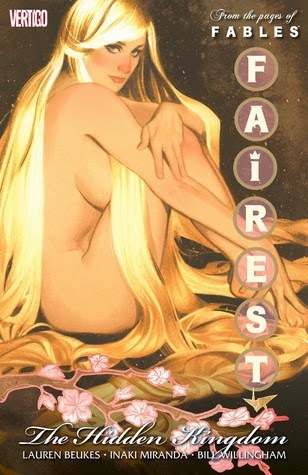
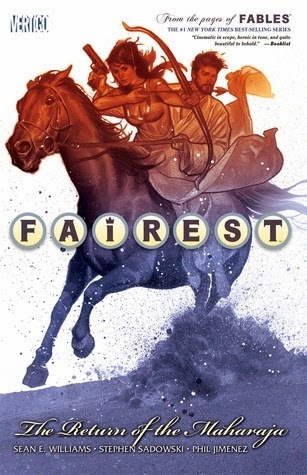
Fairest: Volume 2 by Lauren Beukes and Volume 3 by Sean E. Williams
These spinoffs of the popular Fables comics are very hit and miss with me. Volume 2 is about Rapunzel and is pretty solid. It features Rapunzel traveling to Japan in search of her lost baby twins, whom she had been told died at birth. Rapunzel believes otherwise. We get some interesting background on Rapunzel's past in the Japanese version of Fabletown, and the story is certainly different from anything I've read before. I can't say I loved it, but it was fun.
Volume 3 introduces a new female character, Nalayani, and is set on the Indian subcontinent. The Fairest stories are ostensibly about the women from the Fables universe, but this story, disappointingly, truly belongs to Prince Charming, who has come back to life and assumed the role of Maharajah. While Charming became somewhat interesting as a character before he died in Fables, he's literally the worst in this volume. This Goodreads review pretty much sums up my feelings about this installment. It seems like the writers were trying to show how Charming changes thanks to his love for Nalayani, but to me, it just seems like he's gotten pushier and more misogynistic, undoing his growth from the previous arc. Not a stellar addition (but beautiful, as always).
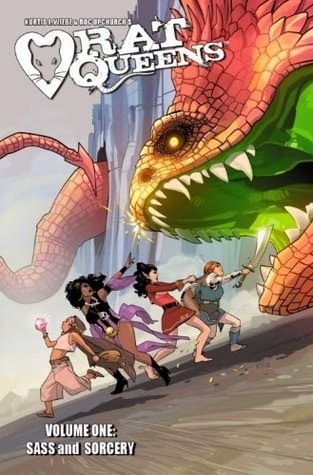
Rat Queens: Volume 1 by Kurtis J. Wiebe and Roc Upchurch
This graphic novel for adults is a stunner. It features a group of female mercenaries (one of them a dwarf) with varying backgrounds, body types, skin colors, and personalities who are sent on a quest in order to avoid going to jail for wreaking havoc on the town they live in. It's fun, funny, raunchy, and smart. The best comics are able to create interesting characters and relationships in a small amount of space, and that's precisely what Rat Queens does. Highly recommended, particularly for comics readers who are searching for those elusive books where women are treated as people (or, you know, dwarves).
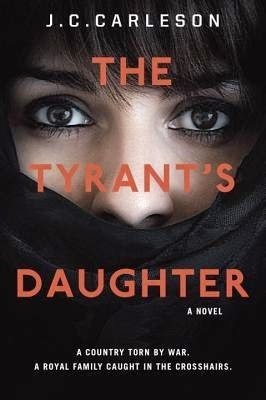
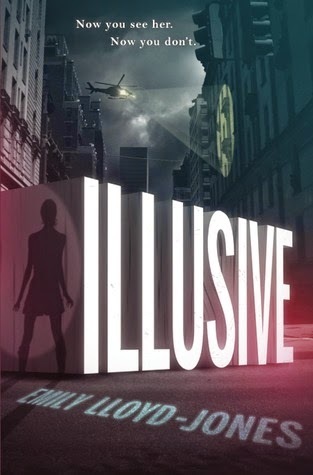
The Tyrant's Daughter by J. C. Carleson
I'm listening to this one on audio and really enjoying it so far. Fifteen year old Laila has just moved to a suburb of Washington, D. C. with her mother and little brother after her father, the king/dictator of a fictional middle eastern country, was killed in a coup. So far, the book has focused on Laila's experiences as an immigrant and the beginnings of her realization that her father, whom she regarded as a great ruler, was regarded as a tyrant by the rest of the world - or at least by her new friends in the United States. The book's synopsis promises a bit of international intrigue later on, which I'm looking forward to. Narrator Meera Simhan voices Laila with a light accent that lends authenticity to the story.
Illusive by Emily Lloyd-Jones
This YA debut is about a group of teens with special powers who run heists. The protagonist has the ability to change her appearance, hence the title, a clever mashup of illusion and elusive. This book is so perfect for me, it's like the author took a trip through my brain, collecting bits and pieces of the things I like and putting them all in a book. It's an incredibly fun read. I want more heist novels for teens!







 Related StoriesWhat I'm Reading Now
Related StoriesWhat I'm Reading Now
Published on July 09, 2014 22:00
July 8, 2014
Conversion by Katherine Howe
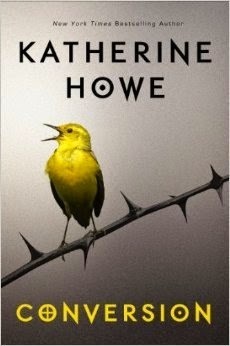 I loved
Conversion
, Katherine Howe's first foray into young adult territory, more than most of what I've read so far this year. The parallels she draws are insightful without hitting the reader over the head with them. She's also done a fine job of getting at what it's like to be under the kind of extraordinary pressure that might cause conversion disorder in these teenage girls.
I loved
Conversion
, Katherine Howe's first foray into young adult territory, more than most of what I've read so far this year. The parallels she draws are insightful without hitting the reader over the head with them. She's also done a fine job of getting at what it's like to be under the kind of extraordinary pressure that might cause conversion disorder in these teenage girls.Colleen Rowley is a senior at an elite all-girls private Catholic school in Danvers, Massachusetts, the site of the former Salem Village. She's in competition with another classmate for valedictorian, is interviewing for admittance to Harvard, and has just started a flirtation-maybe-something-more with a boy who goes to a nearby school. She's under a lot of pressure, but she feels like she can handle it.
Then her classmates start getting sick. One of them exhibits strange verbal tics. Another loses all of her hair. Another - one of Colleen's close friends - coughs up pins. There doesn't seem to be a common thread among their symptoms. More and more girls begin getting sick, and the situation quickly snowballs. Different diagnoses are given, some girls go on television to share their stories, and the media is a constant presence at the school. In her author's note, Howe explains that the succession of hypotheses she describes in her book for the illnesses (from Tourette's to PANDAS to environmental causes) very closely mirrors the case of Le Roy, NY from 2011.
Scattered throughout the book are chapters set in early 1700s Salem, narrated by Ann Putnam as she gives her confession for her part in the Salem witch trials several years earlier. (Putnam was the only person involved to confess.) It's clear that the bulk of the story belongs to Colleen, but these sections set in the past are made more powerful for their brevity. Ann describes her initial reticence to go along with the girls who first started making accusations, but slowly, slowly, she gets caught up and becomes a primary accuser, even legitimately experiencing some of the physical symptoms she only pretended to have before. It's easy for the reader, too, to become caught up. We read about the heady feeling Ann gets when she realizes that this time, the adults - the men, mostly, but the women too - are listening to her, really listening. That this time, her words have power.
And this is where the story holds its real power, too: what will teenage girls do when faced with the pressure they experience? When they're pressured to excel academically, spiritually, and socially, but also told to be "good" and "pure" and given no power to act on their own or be heard with their own voices? It's easy to say that we've come a long way since the 17th/18th centuries in the way teen girls are treated, but that type of pressure? Girls - and particularly girls - in the here and now experience it just as Howe's version of Ann Putnam did 300 years ago. When written in this way, the parallel is obvious.
It was easy for me to relate to Colleen, which is unusual for me to write. There are many reasons I tend not to read contemporary realistic YA, but one of the primary ones is that I don't find many that are authentic to my experience. Not that they need to be - I certainly want to read about people different from me. But there's something to be said for reading about an experience similar to yours, and I could easily relate to Colleen's, even though I didn't attend a Catholic high school and never interviewed at Harvard. I felt the same kind of intense academic pressure to succeed, even finding myself in competition for a top ranking. These things matter very little now, but at the time, they held paramount importance. I felt tremendous academic pressure while at the same time worrying about my hair, my skin, my weight, and yes, my inability to speak and be heard about any of it, my feelings that my words were lesser and my concerns were lesser.
The full impact of the story is weakened slightly by a detail at the very end, involving the yellow bird from the cover. I feel like it undermines the parallels Howe draws between the two events and adds a hint of manufactured creepiness that isn't necessary. I'm being deliberately vague since I know most of you won't have read the book yet, but I'd be interested to hear if those of who have read it agree with me in this respect. Events wrap up fairly quickly near the end, too - Colleen tells us which college she's going to, who made valedictorian, and so on. It feels rushed, almost like Howe was checking things off her list.
Those things aren't huge problems, though, and they don't prevent the book from being a standout. Howe's author's note is a must-read, if only for the reason that she explains she used some of Ann Putnam's own words in the story. It adds historical authenticity and drives home the point that the girls then and the girls now aren't that different - and that we don't treat them all that differently.
Review copy picked up at TLA. Conversion is available now.







 Related StoriesDirty Wings by Sarah McCarryHigh and Dry by Sarah SkiltonThe Kiss of Deception by Mary E. Pearson
Related StoriesDirty Wings by Sarah McCarryHigh and Dry by Sarah SkiltonThe Kiss of Deception by Mary E. Pearson
Published on July 08, 2014 22:00
July 7, 2014
Dirty Wings by Sarah McCarry
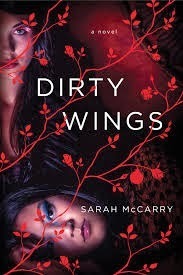 Maia and Cass's friendship happens by chance. Their worlds should have never collided, but they did, and now that they have, the girls are inseparable.
Maia and Cass's friendship happens by chance. Their worlds should have never collided, but they did, and now that they have, the girls are inseparable.Maia's adopted, "lucky" to be living in a home where everything she ever needs is handed to her -- as long as she's proper, behaves, doesn't get out of line, and pursues that talent she has playing piano. She's Vietnamese, and has no knowledge of her birth lineage or how she ended up in this home, with this strict, powerful mother and a father who is more absent, more hung over, than he is present.
Cass is a street girl. She lives in a squat house, wears the kinds of things you'd expect of a girl who doesn't have a home to go back to. It wasn't her choice, after the abusive step fathers and the mother who couldn't offer any most stability than she thought she could make for herself. Hers is a tough life, a brutal contrast to Maia's, but it's when their paths collide and when Cass gives Maia a taste of the wild freedom she has, that Maia can't get enough. That Maia wants to experience for and by herself.
Dirty Wings is the second book in Sarah McCarry's trilogy that begins with All Our Pretty Songs. It can be read alone, as a stand alone, since the events within the first book don't have any bearing on the events of the second. This is a book about the teen lives of the mothers of the girls in book one, and while it informs All Our Pretty Songs, you could read these books out of order (though I will say that one of the revelations that comes at the end of Dirty Wings was so powerful, it made me go back and reread the first book because I put together some of the pieces of mistruth betrayed by the unnamed narrator in that story).
In Dirty Wings, an intense, life-changing friendship unravels, but it's not a pretty, glossy kind of friendship. It's rough and it's dirty, and it's transformative for both girls.
The narrative in this story moves back and forth between the present "Now" and the past "Then." We begin in the now, as one girl stands on the edge of a cliff, ready to throw herself down and end her life. The other girl pulls her back. It is here we see the immediacy -- the necessity -- of their friendship. We flash back, then, to the moment they met, and then further back to the moments where they realized how much they needed one another even then. Maia needed Cass to help her come to her own, and Cass, despite later insistency that she never changed, needed Maia to help show her what a fulfilling, loving friendship could be.
Because what Maia and Cass have for one another is love. It's a phrase they'll open themselves up to saying. A phrase that, for neither of them, had been empty before they found one another. A phrase that didn't have the heart behind it. A phrase that comes with actual tender feelings that neither had allowed themselves to have.
It's about intimacy that's not physical and not romantic.
Not until near the end of the story do we understand how the "Then" and the "Now" intersect. Because in the now, Cass and Maia are on the road. They're in California, then Mexico, then heading toward Seattle. In the "Then," both girls are deeply in Seattle and in their respective lives -- Cass in the squat home and Maia in her pristine home, her hours split between her piano teacher Oscar's home practicing and her own home practicing even more. Cass's future is never talked about because her future is the day-by-day. Maia's, on the other hand, is clear. She's going to an audition at a major, prestigious school in New York City and if she gets in (when she gets in), her life will be on the exact right path. Or will it be? Is this her path or the path her parents and Oscar so desperately want for her?
When Maia and Cass are out together in the "Then," talking about the future, about their lives, about how they do and don't have the capacity to mold it to their liking, they decide it's time to get on the road. Maia steals her father's car, and that's when they enter the "Now."
Before they get to that point, it becomes clear there's something going on in the "Now" that doesn't make Cass all that happy. His name is Jason, and he's the leader in a band the girls went to see on one of their stops. He's nothing special, according to Cass, but the moment Maia sees him she falls desperately, hopelessly In Love, and the girls decide to follow him down to Mexico. It's an all-or-nothing romance Maia flings herself into, and Jason does nothing to stop her from falling for him. He encourages it even because he, too, enjoys what attention Maia puts upon him. It is no time before the two announce their engagement, and Cass is left to feel lost and alone in a way she never felt before. In a way that made her question her own future, now that she's lost her best friend to a boy who won her with pretty songs and pretty promises of a rock and roll future.
There is so much to dig into here. This is a rich, layered story with characters who are so deeply flawed and yet incredibly fascinating and compelling because of these very flaws. Cass and Maia's love for one another is palpable, and because McCarry's story is written from a third person point of view, it's clear that even when Jason enters the picture, Maia's love for her best friend doesn't go away. It's influenced and strained because of Jason and because of the excitement there is in chasing something new, but the feelings she has for Cass don't change because she recognizes that it's with Cass she was best able to think about who she is. Even if how she pursues it -- how she chases it -- how she names it -- is wrong. At the end of the book, there's a great line where Cass talks about how much she's seen Maia change and grow over the course of their friendship but that she herself will always be the kind of girl she is. This line, seemingly simple, tells us as readers just how much Cass herself has changed, too.
We do end the story knowing Maia's pregnant.
We end the story knowing Jason's not going to be around much.
And we also end the story knowing something happened between Cass and Jason that unlocks a million answers to All Our Pretty Songs. Or at least, perhaps it unlocks a million answers -- Cass's reliability is always up for question.
Woven into the story is the fantastical element. Dirty Wings takes from the myth of Persephone, but in no way is it a retelling nor is knowledge of the myth necessary to appreciate the story. Readers who do know it will get it and those who do not will see those elements as wholly part of the story itself. Both Maia and Cass are haunted by images of a man in a dark robe, and both of the girls have their own interpretations and expectations of this vision, and how each of them chooses to interact with it not only illuminates who they are as individuals, but also gives depth to what their relationship becomes at the end. This is fantasy light: there's not a world being built, and even with the interweaving of the Persephone myth, the question remains up in the air of whether what happened "actually" happened in the story or whether both girls suffer from something more internal. For me, it was a little bit of both, especially because of how Cass chose to pursue and compartmentalize these visions. Perhaps, too, it was symbolic of what could come between two girls who are best friends.
Dirty Wings will appeal to readers who want a challenging, literary story about friendship that pulses with music and gorgeous prose. It's not for the faint of heart readers -- drugs, alcohol, partying, and sex are all part of this world, but by virtue of the way the girls are written and characterized, it's clear none of what they do or engage in is glamorized. Their choices impact them greatly. This is the kind of book perfect for those who identify as goth or alternative or who believe they don't ever see themselves present in books. They are here in this book and in a way that's authentic, thoughtful, and full of depth.
If you want to know a bit more about Dirty Wings or Sarah McCarry's writing, as well as enter to win copies of her books, check out this great interview.
Dirty Wings will be available next Tuesday, July 15 from St. Martin's Press. Review copy received from the publisher. In full disclosure, Sarah and I both write for Book Riot.







 Related StoriesHigh and Dry by Sarah SkiltonThe Kiss of Deception by Mary E. PearsonComplicit by Stephanie Kuehn
Related StoriesHigh and Dry by Sarah SkiltonThe Kiss of Deception by Mary E. PearsonComplicit by Stephanie Kuehn
Published on July 07, 2014 22:00
July 6, 2014
The Three C's of the Changing Book Blogging World

The post I wrote about blogging and responsibility a couple of weeks ago seems to have struck a chord with lot of readers, both those who blog and those who just enjoy reading them. The responses were great and gave me a lot to think about.
I noted in the post that there were a few other things on my mind in relation to blogging I thought might be worth writing about. More specifically, I thought it would be worth looking at how blogging has changed in the last few years and what, if anything, that might mean. It's interesting to take stock of what's out there now and what's been out there in the past, and it's also interesting to think about the kinds of things that aren't gone but have instead shifted. As blogs have grown in popularity, the way people interact and engage with them has grown and changed as well.
Like last time, I'd love anyone to weigh in on what they think about these or any other blogging-related topics. What I see is from my own experience, as well as those experiences of people I know who blog or read blogs and have been for a while. The three topics I want to delve into -- crediting, commenting, and critical reviews -- are things that are on the forefront of my mind and they're things that matter a lot to me in terms of how I can be a better blogger within the blogging community and as important, to our readers here.
Crediting
In the last few weeks, citing and giving credit where credit is due has been popping up in the blogging world. There are two thought-provoking posts from the library world (here and here) and there's a post from Molly at Wrapped Up In Books.
During the same span of time, I stumbled across more than one post written on other blogs that mirrored things I've written, almost down to the voice. And these weren't coincidence type posts; these were posts that were on a very similar topic that wasn't necessarily timely to what was going on in the bigger world of books and reading. In none of those posts were my posts noted or credited. While I think it's fair for anyone to write on anything they want to, it's also obvious to me when people have written a post that's been inspired by another; perhaps it's because I read so many blogs. Perhaps it's because I know my own voice and writing well enough to ferret out the sorts of passages and thinking patterns that I go through when I work something out in writing.
Seeing those posts and seeing no credit to me at all, not even in a passing manner, made me very angry. And it makes me equally angry when I see posts by people I read being used in the same way: as springboards without any passing credit.
I think it's easy when you're new to the blogging world to think everything on the internet is free. Unfortunately, what I saw didn't come from new bloggers; they came from established ones who should know better than that. Rather than acknowledge their post was spurred by another interesting discussion, those posts were written without any contextualization and without any credit. When there's no credit given, and when it's obvious that credit should be acknowledged, it's not borrowing; it's stealing.
Having your work stolen is shitty.
When I sit down to work on a post that's adding to a larger discussion or trying to spur a larger discussion, I also open up Google and do a little searching. I pull open my Feedly saved posts, as well as the things I've saved in Pocket, and I look to see what, if anything, other bloggers have said about this topic. In many cases, the reason I find myself interested in writing a big post is that it's something I've been thinking about because someone else has written or discussed it. It only makes sense for me to sit down and dig through what people have said or not said and raise those posts into my own piece, in order to ground my argument and to give credit to those sources. It doesn't mean I have to agree with them, but it means I acknowledge that they had an idea and pursued it; it would be lazy and, I think, unethical of me to ignore than, even if I disagree completely.
The work people put into blogging isn't free work. It's a passion but it's also a passion pursued at the expense of something else. What's being said and what's worth expanding upon doesn't come from the ether. Actual, real people sit behind those words and use their energy to pursue ideas. To not credit that work in some capacity is theft.
It is hard to keep track of what and where you're reading things. But there are easy-to-use tools worth looking at in order to be a better, more ethical, more thorough blogger. Feedly and Pocket are my go-to choices, since I can bookmark and save interesting things in each, then I can search through them. But it's also easy enough to hop on Google and refine your searches to a certain time frame, when you know or remember having read a post on a certain topic.
By no means do you have to look everything you're interested in writing up and build your own work around those who've written on it before you. But good writing does build upon the work of others, so taking a little time to do research -- then crediting that research -- is just good practice. When we write our monthly genre guides, for example, we know other people aren't necessarily talking about those topics at that particular time. We also know, though, that doing our research then linking to what we're looking at only makes what we're doing more enjoyable to use and more valuable to readers.
Write whatever you like and however you like to. Just give credit where credit is due.
Commenting
One of the biggest changes in blogging -- one related to the issue of crediting -- is the decrease in commenting across blogs. We've definitely noticed it here. Where we used to see a large number of comments, we now see relatively few, even though our readership has grown (some bloggers have noted a decrease in readership but we continue to see ours increase). Some days, it's disappointing; you work on a blog post or a review for hours and hours and no one says anything about it. Other times, it's almost a relief no one commented because it's a post you didn't feel entirely sure about or didn't think was your A game.
In many ways, I find it more disappointing to see work I think is fantastic by other people have no comments on it. This is such a great piece! It should have loads of comments! Why is no one listening and responding to it?
The answer is, I think, that the way people engage with content is significantly different than it was a year, three years, and five years ago. One's blogging content and response can't be gauged anymore by a number at the bottom of a post. That's not where readers are looking at and thinking about your work. Engagement is no longer within the blog; it's beyond the blog.
Bloggers are on Twitter, Tumblr, Pinterest, Facebook, and any number of other social networks. So are blog readers. Because of the way information's shared and dispersed, the commenting on a piece is no longer on the blog post itself. It's through shares on social media, through responses that pop up when a post is reblogged on Tumblr. It's through how many tweets and retweets a piece gets. It's also through the discussion that post can spur on podcasts, on other blog posts, and so forth. Because blogging is such a large thing -- and the word blog itself means such a bigger thing than it once did -- people want to comment, talk about, and share what it is they're reading. A post about magical realism in YA might not see a single comment, but it might be tweeted by 100 people, reblogged by 50, discussed on a bookish podcast, linked up 15 blogs on weekly link round ups, and so forth. Your work has been seen by thousands at that point, even if it hasn't been commented on by a single person.
Rather than your blog existing within itself and within this community of bloggers, it's grown legs and reached audiences both familiar and, maybe more interestingly/importantly, those who are unfamiliar.
Reaching new eyes is exciting and it's what drives new people to become regular readers. Reaching new eyes also means that it's harder to pinpoint engagement and it's harder to figure out who your readership really is. We rarely see where our posts end up unless we spend a long time researching where they've been shared socially. Sometimes, those pop up if we go into Google Analytics, but for the most part, I'd rather spend time writing and reading than tracking down every instance where my work ends up.
And this is where crediting becomes really important, too.
When a blog post is credited as a source or inspiration for another post, that's how the initial blogger can often "track back" where their content is landing. For me, this is exciting because I love seeing what people are taking away from my writing but more, I love that it opens up new voices and blogs for me to read and follow. It's the new way to engage and grow the community. No longer are their big roundups of "necessary to read" bloggers like there was early on. Because this is such a huge world and because it's expansive in terms of content creation and dispersion, finding where people are reading my work gives me an in to see what work I should be reading, too. When you credit where you find inspiration for your work, you help grow the community, not shrink it.
Is it still a bummer that commenting on blogs seems to be a dying art? Sure. But I like to remind myself it means that the comments we do get are really worthwhile, and even if we don't reply to every single one, we do read them and appreciate them. I also like to remind myself that engagement now isn't contained to one place.
There's something fun about seeing one of your blog posts pop up on your Tumblr dash weeks after it's been written and seeing that people have not only shared it, but they've added to it.
Critical Reviews
There's not a lot to explore in terms of critical reviews in the YA blogosphere, is there?
I feel like a lot of the staple critical reviewers -- ones who have been doing this for a long time -- are still doing it. I think about The Book Smugglers, Liz Burns, Leila Roy, and a few others are still writing some of the most thoughtful, deep, analytical reviews out there. Those reviews take exceptional amounts of time to write, and it's not just about the book that these critical reviews are worth reading for. It's also the craft of writing the review itself; they can be creative, exciting, and sometimes funny pieces of writing in and of themselves.
Review writing is an art in and of itself.
I read a lot of blogs, but I have become particular about the ones I read for reviews. I don't like seeing blog tour reviews for the book that a publisher is promoting at the time. I like having the book on my radar, but seeing one, two, or three week long blog tours doesn't excite me, nor does it compel me to want to write a review of the book, unless I know my take aways from the book differ from the ones I've seen (positively or not).
A big reason I love critical reviews is that they're often of books that aren't getting the big marketing and publicity attention that other books are. Whether or not I agree with the review, I find that the critical, thoughtful, an analytical reviews are the ones that make me most want to pick up a book because I know that it's something that's going to make me think -- both about the book and about the review writers.
As I've said again and again, critical reviews are not negative reviews. Critical reviews are thoughtful explorations of what does and does not work in the material at hand. Some of the best critical reviews are entirely positive, but what separates them from a lot of other reviews is they offer a huge slice of the person behind the review. They're often more personal than a personal blog post because they let in opportunities for vulnerability that the reviewer doesn't always know they're opening up: their biases, their preferences, their world views, their passions. These reviews allow me as a reader to really get inside the book and inside the head of another reader. It's hard work, and it's the kind of work that isn't always rewarded with the kind of engagement other posts are -- either in comments or in sharing -- but it's work that is rewarded in terms of what core blog readers (who are readers in general) want.
That's why I blog and that's why I read blogs. It's engaging with other readers.
Which is why I wonder: where are the newer critical reviewers? Where are those newer critical voices? Who can we read and think about and who is going to open us up to new books worth checking out? We've had our eyes on a few bloggers who came for a few months, wrote great reviews, then disappeared. We had our eyes, too, on bloggers who were critical reviewers for a long time then decided for any number of reasons that writing critical reviews was a thing they didn't feel comfortable pursuing anymore.
I know I'm eager to see more. I can't be the only one.







 Related StoriesOn Blogging, Responsibility, and Content OwnershipContemporary YA Week Wrap Up -- And A Bit About Kelly's BookWriting Duos, Or When Authors Team Up
Related StoriesOn Blogging, Responsibility, and Content OwnershipContemporary YA Week Wrap Up -- And A Bit About Kelly's BookWriting Duos, Or When Authors Team Up
Published on July 06, 2014 22:00
This Week in Reading: Volume I

Since I've been bad about keeping Links of Note updated every other weekend -- mostly because I am doing link roundups at Book Riot on weekends now -- I thought it would be worth trying something a little different here. Who knows if this will be a regular feature or something I do when I think to do it at this point.
"This Week in Reading" will be a roundup of links, of course, as well as a look at the books read and picked up in the past week or books that have shown up in the mail. A number of these books might be reviewed in depth later, some of them might not be.
From the picture above, what's showed up in my mailbox the last week to week and a half include A. S. King's Glory O'Brien and the History of the Future (October), Breaking Butterflies by M. Anjelais (August), Breathe, Annie, Breathe by Miranda Kenneally (July), and Above the Dreamless Dead: World War I in Poetry and Comics edited by Chris Duffy (September). Beneath those are a copy of my college's alumni magazine and a copy of the latest issue of Public Libraries magazine.
Books read or in the process of being read this week:
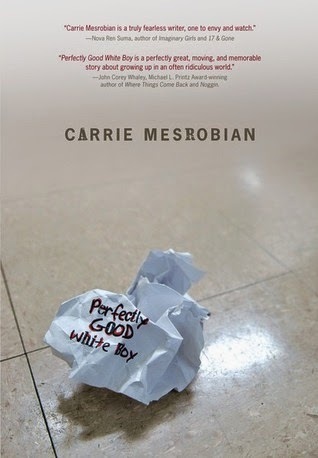
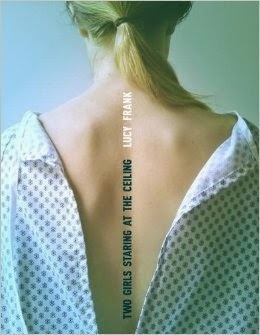
Perfectly Good White Boy by Carrie Mesrobian (September) -- great male voice with humor and an honest look at teen sexuality.
Two Girls Staring at the Ceiling by Lucy Frank (August) -- verse novel about two girls living with Crohns disease, one who has suffered a long time and one who is newly diagnosed.
Both of those books I read egalleys of and I read them both really quickly. I think I tend to read a lot faster on my ereader than in print. I'm not sure why that is.
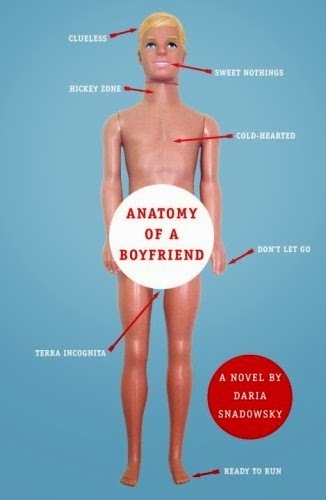
I talked about having Daria Snadowsky's Anatomy of a Boyfriend on my to-read pile, and I dove in this morning. So far, I really am enjoying the voice.
Great reading around the internet from the last couple of weeks, of both the book/reading related kind and beyond:
Becky Spratford wrote a really great response to my post last week about quitting the Printz. She talks about who she advocates for and why she keeps her advocacy in those places. Why 29 is the best number for Buzzfeed listicles. What is fascinating in this piece, more than that conclusion, is that 10,000 listicles were published on Buzzfeed in a three-month period. The call for proposals to present at the 8th annual Kid Lit Con in Sacramento is out. Go! I was really honored to see my book in this piece from Parnassus Books about realistic fiction. It's a nice post about how reality has always been a part of YA fiction and how it's not about being a trend. This was the first time I saw my book pop up somewhere and seeing it here was really neat, especially since the post gets at some of what I get at. Who are the biggest publishers of children's books? I found this numeric breakdown really interesting, as some of the biggest houses are surprisingly...not in the very top of the numbers game. Kathleen Hale wrote an incredible essay for Random House Canada about sexual assault. This is not an easy read, but it is really, really worthwhile.
Two new blog/blog series for your radar:
Get Ebony's The Dark Fantastic on your feed readers. Her goals are to look at race and imagination in children's and young adult books. This is a fantastic resource and one that I am paying close attention to. Leonicka Valcius is kicking off a series all about diversity in publishing over at The Toast. She runs the regular #DiverseCanLit chat over on Twitter, too, which is worth keeping an eye on (if you don't dive in to participate yourself).
Upcoming:
This week, a bunch of us organization nerds will be talking about how we get and stay organized with our lives on Tumblr and around the blogosphere. If you want to follow along, the tumblr tag will be #get organized, and I'm going to try to round up the posts throughout the week on my tumblr. Anyone who would love to weigh in on how you keep it all together -- pen and paper? bullet journal? Google calendar? a mixture of them all? -- is more than welcome to take part. We want to see and talk about getting things done and how we get it done. If you want to contribute but don't have tumblr/check the tag, you can email me the link to wherever you wrote (or if you want to simply Instagram or do some kind of photo visual of your tools) at stacked.books at gmail.com. Here's the intro post.








Published on July 06, 2014 12:52
July 2, 2014
Reader Advocacy, Speaking Up, and Ducking Out: On Quitting The Printz
Roger Sutton wrote an editorial for the July/August issue of The Horn Book Magazine that struck a chord with me last week. Read it in full here.
The ALSC Board, which oversees the division of ALA focused on services to children 12 and younger, has been working on changing the policy for those serving on their awards committees (which includes the Caldecott and Newbery). Roger's major concern with the new policy is that it imposes a "gag order" on those serving. The members of these committees aren't allowed to review books professionally nor personally, and they can't talk about eligible books in any capacity anywhere online. They can't write book lists, can't blog about any element of the books, and so forth, if the title is eligible for their committee's award.
While what he talks about is related to ALSC, his points are relevant to something that caught my eye in the board documents released prior to ALA Annual from YALSA, the organization dedicated to services to young adults and which administers the Printz award, among others.
Brought to the Board as a consent item, YALSA's changing their social media policy as it relates to service on awards committees, too. You can read the entire proposal, which was passed on Saturday, right here. For the most part, it's of the same line of expectations that many who have served have been operating under: don't write personal reviews about books on the internet. Those could be misinterpreted by an average person, especially if your affiliation with an award is known. The policy also says that writing reviews for professional outlets is not allowed, meaning that those serving on a committee like the Printz can't write reviews for professional trade journals including School Library Journal or VOYA (and the wording doesn't make clear whether or not this policy extends to journals like Kirkus or Publishers Weekly which post unsigned reviews). For those who review for a little extra income, that means they're losing that cash in exchange for a year of service. This is a loss not only to them, but it's also a loss to the larger professional committee that depends upon solid critical reviews -- ones you'd expect from professionals with the capacity to serve on awards committees.
Another point of interest in the new policy was buried in the FAQ section:
No booklists. No reader's advisory. No talk of book covers.
For some YA librarians, that would mean they cannot do the job they are paid to do, where their job may involve updating social media or other electronic resources that have their name attached -- and this happens regularly as part of many library's desire to be seen as more personable -- with information about books for the sake of their teens. They'd have to go to their boss and say they can't do the job they were hired for for the sake of the award and the secrecy surrounding it.
In my case, that would mean not talking about any 2015 titles at all here on STACKED, no talking about 2015 titles at Book Riot, and no talking about any 2015 titles on Twitter or Tumblr or any other social network. The only time it would be okay to talk about any 2015 YA titles would be in person.
As Roger noted in the comments section of his post linked above, if someone on the committee were approached about writing an article about YA books, they wouldn't be allowed to. If a person on the committee were approached about offering some recent reads that would appeal to a type of reader via their blog or Twitter, they couldn't answer unless it was in person.
"Have someone else do it" sounds great in theory, but it's not always a possibility for many, for any number of reasons. Some librarians have gained their experience through electronic means and many work in rural or small libraries where they are the sole person doing the work of reader's advisory. Where they ARE the expert and expected as part of their job to talk and write about books. Or, they're in places like I am where my professional experience and knowledge has put me in the great position of being able to talk about books and reading online as a job.
When I was elected onto Printz, I spent a long time wondering whether I'd still be able to do my job at Book Riot and not have a massive conflict of interest. If I wasn't reviewing and I weren't promoting my work in conjunction with my position on Printz, it didn't seem like a problem.
But this new policy is an overstep that asks committee members to put their jobs involving talking and/or writing about books and their knowledge about books on hold for a year in exchange for choosing a handful of books to be regarded as "the best." Of course being on Printz or on another award committee is not a right anyone is entitled to; it's a privilege. But it's a privilege that privileges those with the ability to put aside their passion, their enthusiasm, their opportunities, and in some cases, their jobs in order to maintain a shroud of secrecy.
Because of this, I made the decision to quit the Printz committee to which I was elected for next year.
It's more important to me to advocate for readers and the books out there for them than it is for me to spend a year not talking. To spend a year in silence because I don't have an in-person community with which I can talk about books or reading. That, as long-time readers may recall, is why STACKED began in the first place and why it continues to be the blog that it is. It's why I took the job at Book Riot, too: more opportunity to talk about and be passionate for readers and books.
There's a particularly thought-provoking line in Roger's editorial that sticks out:
I'd rather give up this opportunity -- one that many wonderful, generous people helped me earn by signing the petition to get me on the ballot and then voting for me in the election -- than spend a year worrying that any and all things I say can or would be used against me by YALSA.
Because what would constitute as electronic communication? What would the line be between what's appropriate and what isn't? What would happen were I to tweet with an author, for example, who had an eligible book during my committee term? What if I answered a request from someone who wanted to know about some diverse contemporary YA that had come out recently? What if I were asked to help identify a book by its cover and it happened to be an eligible book?
Maybe those sound a bit extreme, but they're not.
Two years ago, I was asked to be part of the Outstanding Books for the College Bound committee. But, when I received the offer, there was a string attached to it -- I needed to have a talk with someone because there were some concerns about me.
I'm a rule-follower who pours over things like board documents to think through what an organization I'm part of is doing, so hearing there were concerns sent me into a panic. The concerns were two part. First, I misattributed a blog post an individual blogger wrote to the organization, which was an error on my part and I apologized.
The second was a comment I made about YALSA wanting to implement paid advertising on their Hub Blog, to generate money off content put together by its members, who essentially pay membership fees to run the blog and write for it. I didn't -- and still don't -- think an organization should profit off the hard work of its members without compensating them for it. I was told that raising this point in my own blog space was inappropriate, to which I responded that as a paying, active, and involved member of YALSA, I had the right to share an opinion about these decisions, whether or not they're implemented or considered.
I have a right to my voice, especially if I'm involved.
Not long after that, I went to ALA Midwinter and served as the administrative assistant to the Alex Committee. I'd been a part of it all that year, but this was when the actual decisions were being made. It was a wonderful experience -- my first sitting on a committee making some big choices. As an admin, I had no reading to do and I couldn't talk about the books. I was there to take notes, to run the straw polls, and to do other administrative tasks as they arose. That means long stretches in a room being silent. Not a huge deal; it was fun to watch the passion and debate over what titles deserved the honor.
When the deliberations were going on, I made a couple of tweets about the process. I believe one was something like it's great to watch how passionately these committee members are debating books and I believe I tweeted when the final slate was selected saying that they all worked hard and it was going to be exciting to share those titles. Absolutely nothing about the process was said (I may have said I was running the straw poll and that it was intense) and no book titles or discussion points were tweeted. It was innocuous tweeting about how fun the experience was.
I got home from ALA to a phone call where I was told that what I'd done in tweeting was inappropriate. Because it was a closed committee, absolutely nothing was to be said and I needed to be careful.
This surprised me because everyone who is involved in YALSA or who cares about these awards knows that members of closed committees frequently tweet when they're done or tweet they're excited to have picked their winners. It's part of raising the profile of the award and more, the HARD WORK that committees put into their year of service. It is something I had seen in the past, and something I've seen since: lots of us talked about how early the Printz committee had finished their deliberations at the most recent ALA Midwinter -- multiple committee members tweeted about it -- and we speculated on what that could mean come the day of announcements.
I'm still confused why I was singled out about what I'd tweeted out the year before when I'd done nothing differently.
These experiences are why I chose to step down from the Printz committee. With YALSA's decision to gag order all communication about books electronically that could be eligible for an award, every word I say would be scrutinized. Because of my previous experience with the inconsistency in how these policies are enforced and the feeling YALSA was not receptive to discussion about the operation of the organization from its members, I didn't think spending a year worrying that any or all things I say could turn into a problem at any given moment was worth it.
Abby wrote a post a few years ago about how ALA is not your mom. It's well-worth reading, especially because the point of it is how important being an active and engaged member of your own community -- whatever it is -- is how you make it worthwhile.
The part I want to especially highlight is this:
I've tried to make the best of being in YALSA by regularly volunteering. I blogged for the Hub for 2 years, served on a process committee very early in my career, I've presented and put in proposals to present multiple times, and I've volunteered to be on selection committees every year since the start. I find satisfaction in being involved. It costs me a lot financially (all paid for on my own) and in terms of time. I do it because I love being a part of an organization comprised of people like me who are impassioned and dedicated to teens, teen lit, and teen library services. I do it so I can work toward making change happen.
But this new policy and my previous experiences have made me see this organization as more like my mother than as an organization made up of "us" -- people like me and unlike me who share similar interests and intellectual development opportunities.
You can be involved and passionate, but an organization has to be receptive to that. They should be consistent, communicative, and willing to listen.
It's better at this point for me to step away so that I can be involved in the book community and share my passion and knowledge with others. With these new policies, I've realized I cannot do this while connected to YALSA.
I, like all elected committee members past and present, care a lot about books and about readers, as well as connecting the right readers to the right books. I'd rather continue to engage publicly with this amazing book community -- blogging, tweeting, tumbling, engaging in online discussion -- to keep doing that. I'm disappointed I have to give up the opportunity to serve on the Printz to do so, but I can't play by the rules that I didn't agree to in the first place which now ask me to give up the things I worked so hard for over the course of my career. I respect the choices of all members and am grateful for the contributions and service to the book community that serving on a committee offers. But I also know I can't be the only committee member in my position struggling with what this change in policy means.
All committee members have to make the decision that's best for them, and this is the best choice for me.
I can't wait to talk about the rich, wide world of 2015 in YA because I have a feeling it's going to be worth shouting about. Books and reading are always worth celebrating and discussing.






 Related StoriesThere's No Such Thing As A Straight LineA Whirlwind Trip to PLA 2014, "About the Girls," + Other MusingsI'm running for the 2016 Printz Committee
Related StoriesThere's No Such Thing As A Straight LineA Whirlwind Trip to PLA 2014, "About the Girls," + Other MusingsI'm running for the 2016 Printz Committee
The ALSC Board, which oversees the division of ALA focused on services to children 12 and younger, has been working on changing the policy for those serving on their awards committees (which includes the Caldecott and Newbery). Roger's major concern with the new policy is that it imposes a "gag order" on those serving. The members of these committees aren't allowed to review books professionally nor personally, and they can't talk about eligible books in any capacity anywhere online. They can't write book lists, can't blog about any element of the books, and so forth, if the title is eligible for their committee's award.
While what he talks about is related to ALSC, his points are relevant to something that caught my eye in the board documents released prior to ALA Annual from YALSA, the organization dedicated to services to young adults and which administers the Printz award, among others.
Brought to the Board as a consent item, YALSA's changing their social media policy as it relates to service on awards committees, too. You can read the entire proposal, which was passed on Saturday, right here. For the most part, it's of the same line of expectations that many who have served have been operating under: don't write personal reviews about books on the internet. Those could be misinterpreted by an average person, especially if your affiliation with an award is known. The policy also says that writing reviews for professional outlets is not allowed, meaning that those serving on a committee like the Printz can't write reviews for professional trade journals including School Library Journal or VOYA (and the wording doesn't make clear whether or not this policy extends to journals like Kirkus or Publishers Weekly which post unsigned reviews). For those who review for a little extra income, that means they're losing that cash in exchange for a year of service. This is a loss not only to them, but it's also a loss to the larger professional committee that depends upon solid critical reviews -- ones you'd expect from professionals with the capacity to serve on awards committees.
Another point of interest in the new policy was buried in the FAQ section:
The bolded text gets to what Roger's talking about in his piece. The new policy is indeed a gag order. There's to be no electronic communication about eligible titles -- any YA titles published in 2015 -- at all outside of communication within the committee's work process.Does this mean I may not blog or tweet?Committee members may not blog or otherwise communicate electronically (outside of the internal committee work process) regarding any aspect of eligible titles during their committee term. Once their term is complete, committee members may not discuss the status of books as having been or not been under consideration, suggested, and/or nominated for the award or anything else discussed during the closed committee meetings.
No booklists. No reader's advisory. No talk of book covers.
For some YA librarians, that would mean they cannot do the job they are paid to do, where their job may involve updating social media or other electronic resources that have their name attached -- and this happens regularly as part of many library's desire to be seen as more personable -- with information about books for the sake of their teens. They'd have to go to their boss and say they can't do the job they were hired for for the sake of the award and the secrecy surrounding it.
In my case, that would mean not talking about any 2015 titles at all here on STACKED, no talking about 2015 titles at Book Riot, and no talking about any 2015 titles on Twitter or Tumblr or any other social network. The only time it would be okay to talk about any 2015 YA titles would be in person.
As Roger noted in the comments section of his post linked above, if someone on the committee were approached about writing an article about YA books, they wouldn't be allowed to. If a person on the committee were approached about offering some recent reads that would appeal to a type of reader via their blog or Twitter, they couldn't answer unless it was in person.
"Have someone else do it" sounds great in theory, but it's not always a possibility for many, for any number of reasons. Some librarians have gained their experience through electronic means and many work in rural or small libraries where they are the sole person doing the work of reader's advisory. Where they ARE the expert and expected as part of their job to talk and write about books. Or, they're in places like I am where my professional experience and knowledge has put me in the great position of being able to talk about books and reading online as a job.
When I was elected onto Printz, I spent a long time wondering whether I'd still be able to do my job at Book Riot and not have a massive conflict of interest. If I wasn't reviewing and I weren't promoting my work in conjunction with my position on Printz, it didn't seem like a problem.
But this new policy is an overstep that asks committee members to put their jobs involving talking and/or writing about books and their knowledge about books on hold for a year in exchange for choosing a handful of books to be regarded as "the best." Of course being on Printz or on another award committee is not a right anyone is entitled to; it's a privilege. But it's a privilege that privileges those with the ability to put aside their passion, their enthusiasm, their opportunities, and in some cases, their jobs in order to maintain a shroud of secrecy.
Because of this, I made the decision to quit the Printz committee to which I was elected for next year.
It's more important to me to advocate for readers and the books out there for them than it is for me to spend a year not talking. To spend a year in silence because I don't have an in-person community with which I can talk about books or reading. That, as long-time readers may recall, is why STACKED began in the first place and why it continues to be the blog that it is. It's why I took the job at Book Riot, too: more opportunity to talk about and be passionate for readers and books.
There's a particularly thought-provoking line in Roger's editorial that sticks out:
No librarian worthy of the name should ever put herself in the position of not being able to promote good books.
I'd rather give up this opportunity -- one that many wonderful, generous people helped me earn by signing the petition to get me on the ballot and then voting for me in the election -- than spend a year worrying that any and all things I say can or would be used against me by YALSA.
Because what would constitute as electronic communication? What would the line be between what's appropriate and what isn't? What would happen were I to tweet with an author, for example, who had an eligible book during my committee term? What if I answered a request from someone who wanted to know about some diverse contemporary YA that had come out recently? What if I were asked to help identify a book by its cover and it happened to be an eligible book?
Maybe those sound a bit extreme, but they're not.
Two years ago, I was asked to be part of the Outstanding Books for the College Bound committee. But, when I received the offer, there was a string attached to it -- I needed to have a talk with someone because there were some concerns about me.
I'm a rule-follower who pours over things like board documents to think through what an organization I'm part of is doing, so hearing there were concerns sent me into a panic. The concerns were two part. First, I misattributed a blog post an individual blogger wrote to the organization, which was an error on my part and I apologized.
The second was a comment I made about YALSA wanting to implement paid advertising on their Hub Blog, to generate money off content put together by its members, who essentially pay membership fees to run the blog and write for it. I didn't -- and still don't -- think an organization should profit off the hard work of its members without compensating them for it. I was told that raising this point in my own blog space was inappropriate, to which I responded that as a paying, active, and involved member of YALSA, I had the right to share an opinion about these decisions, whether or not they're implemented or considered.
I have a right to my voice, especially if I'm involved.
Not long after that, I went to ALA Midwinter and served as the administrative assistant to the Alex Committee. I'd been a part of it all that year, but this was when the actual decisions were being made. It was a wonderful experience -- my first sitting on a committee making some big choices. As an admin, I had no reading to do and I couldn't talk about the books. I was there to take notes, to run the straw polls, and to do other administrative tasks as they arose. That means long stretches in a room being silent. Not a huge deal; it was fun to watch the passion and debate over what titles deserved the honor.
When the deliberations were going on, I made a couple of tweets about the process. I believe one was something like it's great to watch how passionately these committee members are debating books and I believe I tweeted when the final slate was selected saying that they all worked hard and it was going to be exciting to share those titles. Absolutely nothing about the process was said (I may have said I was running the straw poll and that it was intense) and no book titles or discussion points were tweeted. It was innocuous tweeting about how fun the experience was.
I got home from ALA to a phone call where I was told that what I'd done in tweeting was inappropriate. Because it was a closed committee, absolutely nothing was to be said and I needed to be careful.
This surprised me because everyone who is involved in YALSA or who cares about these awards knows that members of closed committees frequently tweet when they're done or tweet they're excited to have picked their winners. It's part of raising the profile of the award and more, the HARD WORK that committees put into their year of service. It is something I had seen in the past, and something I've seen since: lots of us talked about how early the Printz committee had finished their deliberations at the most recent ALA Midwinter -- multiple committee members tweeted about it -- and we speculated on what that could mean come the day of announcements.
I'm still confused why I was singled out about what I'd tweeted out the year before when I'd done nothing differently.
These experiences are why I chose to step down from the Printz committee. With YALSA's decision to gag order all communication about books electronically that could be eligible for an award, every word I say would be scrutinized. Because of my previous experience with the inconsistency in how these policies are enforced and the feeling YALSA was not receptive to discussion about the operation of the organization from its members, I didn't think spending a year worrying that any or all things I say could turn into a problem at any given moment was worth it.
Abby wrote a post a few years ago about how ALA is not your mom. It's well-worth reading, especially because the point of it is how important being an active and engaged member of your own community -- whatever it is -- is how you make it worthwhile.
The part I want to especially highlight is this:
I'm here today to say that ALA is an organization made up of US. It's not some magical entity floating around to solve all librarians' problems. ALA is what we make of it.
Therefore, if you're not getting what you want out of ALA (what is it that you want out of ALA, anyway?), the only way to change that is to get involved.
ALA is not your mom. ALA is not there to do your laundry and pick up your socks, metaphorically speaking. ALA exists to create a professional network for the sharing of ideas, the bettering of our profession, and the education of library staff.
You know what is absolutely NOT helpful? People complaining about something and not doing anything to change it. ALA is what you make of it. If you don't like it, get involved and change it.
I've tried to make the best of being in YALSA by regularly volunteering. I blogged for the Hub for 2 years, served on a process committee very early in my career, I've presented and put in proposals to present multiple times, and I've volunteered to be on selection committees every year since the start. I find satisfaction in being involved. It costs me a lot financially (all paid for on my own) and in terms of time. I do it because I love being a part of an organization comprised of people like me who are impassioned and dedicated to teens, teen lit, and teen library services. I do it so I can work toward making change happen.
But this new policy and my previous experiences have made me see this organization as more like my mother than as an organization made up of "us" -- people like me and unlike me who share similar interests and intellectual development opportunities.
You can be involved and passionate, but an organization has to be receptive to that. They should be consistent, communicative, and willing to listen.
It's better at this point for me to step away so that I can be involved in the book community and share my passion and knowledge with others. With these new policies, I've realized I cannot do this while connected to YALSA.
I, like all elected committee members past and present, care a lot about books and about readers, as well as connecting the right readers to the right books. I'd rather continue to engage publicly with this amazing book community -- blogging, tweeting, tumbling, engaging in online discussion -- to keep doing that. I'm disappointed I have to give up the opportunity to serve on the Printz to do so, but I can't play by the rules that I didn't agree to in the first place which now ask me to give up the things I worked so hard for over the course of my career. I respect the choices of all members and am grateful for the contributions and service to the book community that serving on a committee offers. But I also know I can't be the only committee member in my position struggling with what this change in policy means.
All committee members have to make the decision that's best for them, and this is the best choice for me.
I can't wait to talk about the rich, wide world of 2015 in YA because I have a feeling it's going to be worth shouting about. Books and reading are always worth celebrating and discussing.







 Related StoriesThere's No Such Thing As A Straight LineA Whirlwind Trip to PLA 2014, "About the Girls," + Other MusingsI'm running for the 2016 Printz Committee
Related StoriesThere's No Such Thing As A Straight LineA Whirlwind Trip to PLA 2014, "About the Girls," + Other MusingsI'm running for the 2016 Printz Committee
Published on July 02, 2014 22:00
July 1, 2014
Get (sub)Genrefied: Alternate History
Each month, we're focusing on a particular genre or subgenre, discussing its definition, appeal factors, and a few recent and forthcoming titles that fall within it. All of our genre guides can be found at our genre fiction tag. This month, we tackle alternate history.
Definition & OverviewAlternate history is a subgenre of science fiction. But: a lot of readers think defining alternate history as science fiction is problematic, since alternate history doesn't really have to involve science at all. A more accurate definition (or at least a definition that causes fewer arguments!) may be to call it a subgenre of speculative fiction, which is a large, umbrella term that encompasses all of science fiction, fantasy, and related categories. Speculative fiction really gets to the root of what alternate history is, in my mind: speculation about what if.
Alternate history in particular asks us to consider what our world would be like if something happened differently in the past. This different event is called the point of divergence. Some common points of divergence that writers come back to over and over again include: the Americans losing the Revolutionary War, the Germans winning World War II, the South winning the Civil War (or any differing outcome in a large military conflict, really), JFK or Lincoln not being assassinated, and so on. Usually the books focus on an event that most people are familiar with, but not always. Sometimes the plot revolves around something else entirely, and the point of divergence is merely backdrop.
Alternate history has been fairly popular among adult audiences for quite some time. Harry Turtledove, who wrote Guns of the South (among many, many others), is possibly the most well-known alternate history novelist for adults. Others the average reader may recognize are Cherie Priest's Boneshaker series, Jo Walton's Small Change series, and Naomi Novik's Temeraire series.
There are fewer examples in YA, but they exist. Often they're crossovers with other subgenres, usually steampunk, time travel, or stories about parallel universes. Often characters start out in our own world and travel back in time to change history or find a portal to a parallel universe where things are different. And of course, steampunk is a huge source for alternate history - it's possible to make an argument that steampunk is by definition alternate history. Other crossovers are possible, too, such as a crossover with fantasy where the introduction of magic at a certain point in time alters history in some way.
Joan Aiken's The Wolves of Willoughby Chase is a classic example of children's alternate history, though I know when I first read it as a child, I had no idea it belonged in that subgenre. It's set in 1830s England ruled by a Stuart King by the name of James III. This is a prime example of a book where knowing the history isn't essential, but it certainly deepens the reader's enjoyment.
My favorite book series of all time, His Dark Materials by Philip Pullman, can also be called alternate history after a fashion. The first book is set in a parallel universe to ours, where the religion of England developed much differently than it did in our own world, making a big impact upon society. Parallel universes are a great way to incorporate alternate history, usually causing the reader to consider alternate events in direct contrast to how those events actually played out.
Alternate history appeals to history buffs, of course, but also to those readers who just love to ask "what if?" They're a natural draw for SFF fans who love world-building and can generate a lot of intense fan discussion.
(Note: Alternate history is not historical fiction that simply introduces a fictional character. That's not enough. In order for the story to be alternate history, it has to change an event, and that change has to have an effect on the course of events afterward.)
ResourcesUchronia is an impressively huge bibliography of alternate history titles, including novels, short stories, and essays. Unfortunately, while they include children's and YA titles, they don't have a way to search for those specifically (and a number of titles from my list below are not there at all). You can browse by author, language, series, and divergence. It's a fun discovery tool for fans, but perhaps not terrific for someone looking for books just for younger readers - unless they already know a title or author. On the Uchronia page, you'll also find a link to the Sidewise Awards for Alternate History.
These are usually presented at the World Science Fiction Convention each year. While children's and YA titles are considered (you'll find that Nation by Terry Pratchett was shortlisted in 2008), the vast majority of winners and honorees are adult titles. Liz Burns' Alternate History post from 2010 gives a good overview of the subgenre. Chasing Ray has a roundup of blog posts and good reads from across the web about steampunk and alternate history. She hosted a celebration of the subgenre(s) in 2010 (Liz's post is included), and there are tons of great resources here. This Day in Alternate History may not be terribly useful to you in your day job, but it's fun to play around with.Booklist Because this subgenre is much smaller than others we've covered, the list below goes back about ten years. I'm hoping to discover more young adult books that fit this category - hit me with 'em if you've got 'em. Synopses are from Worldcat. In addition to the usual listing of sequels and links to reviews, I've also included some information about the particular divergence in history that the novel addresses.
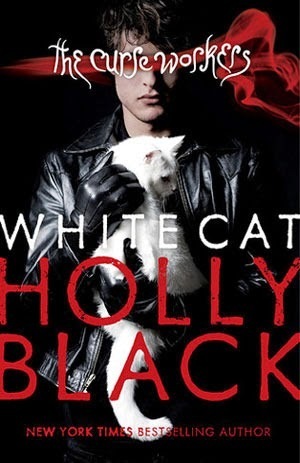
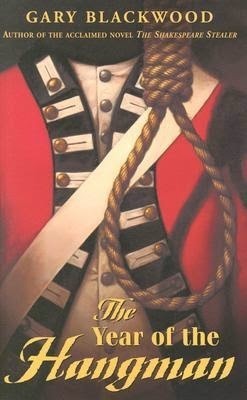
White Cat by Holly Black
When Cassel Sharpe discovers that his older brothers have used him to carry out their criminal schemes and then stolen his memories, he figures out a way to turn their evil machinations against them.
Divergence: Magic exists and was banned in 1929, much like alcohol was banned in 1919, contributing to the rise of organized crime in the United States. | Sequels: Red Glove, Black Heart | Kimberly's Reviews: White Cat, Red Glove, Black Heart
The Year of the Hangman by Gary Blackwood
In 1777, having been kidnapped and taken forcibly from England to the American colonies, fifteen-year-old Creighton becomes part of developments in the political unrest there that may spell defeat for the patriots and change the course of history.
Divergence: The British win the American Revolutionary War in 1776.
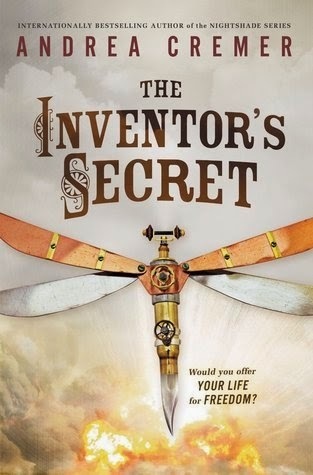
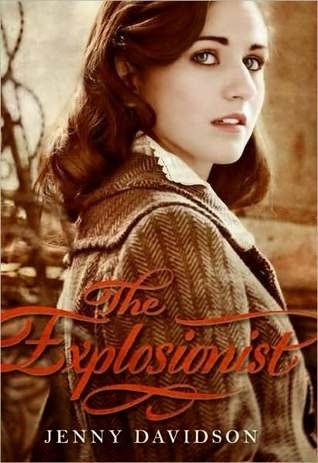
The Inventor's Secret by Andrea Cremer
In an alternate nineteenth-century America that is still a colony of Britain's industrial empire, sixteen-year-old Charlotte and her fellow refugees' struggle to survive is interrupted by a newcomer with no memory, bearing secrets about a terrible future.Divergence: The American Revolutionary War never happened and Britain's empire continued to expand. | Sequels: None yet, but it's the beginning of a series, so expect them.
The Explosionist by Jenny Davidson (sequel: Invisible Things)
In Scotland in the 1930s, fifteen-year-old Sophie, her friend Mikael, and her great-aunt Tabitha are caught up in a murder mystery involving terrorists and suicide-bombers whose plans have world-shaping consequences.Divergence: Napoleon wins the Battle of Waterloo, creating a group of totalitarian European states that are at odds with a group of independent northern European countries. | Sequel: Invisible Things
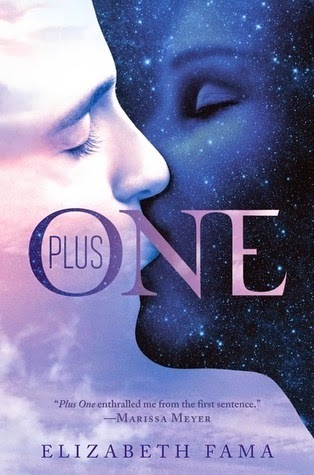
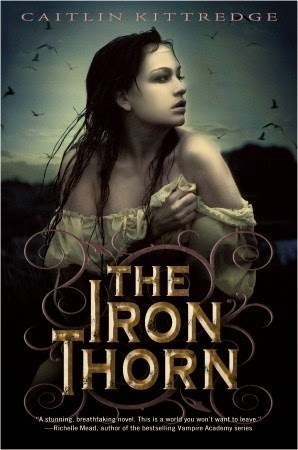
Plus One by Elizabeth Fama
In an alternate United States where Day and Night populations are forced to lead separate--but not equal--lives, a desperate Night girl falls for a seemingly privileged Day boy and places them both in danger as she gets caught up in the beginnings of a resistance movement.
Divergence: The Spanish Flu epidemic of the early 20th century causes the US population to be divided into two different groups who are only allowed out during the day or the night. | Kimberly's Review: Plus One
The Iron Thorn by Caitlin Kittredge
In an alternate 1950s, mechanically gifted fifteen-year-old Aoife Grayson, whose family has a history of going mad at sixteen, must leave the totalitarian city of Lovecraft and venture into the world of magic to solve the mystery of her brother's disappearance and the mysteries surrounding her father and the Land of Thorn.
Divergence: Instead of nuclear power, magic was discovered (invented?). It's now seen as a threat by President McCarthy and his government. (I got this info from Tamora Pierce's review of the title, as I gave up on the book partway through.) | Sequels: The Nightmare Garden, The Mirrored Shard
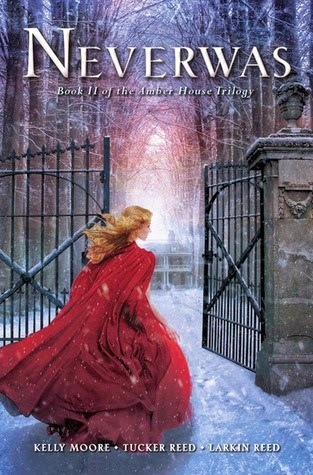
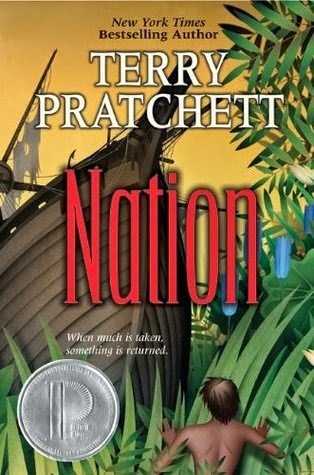
Neverwas by Kelly Moore, Tucker Reed, and Larkin Reed
At her family's Maryland home, in a world where colonists lost the 1776 Insurrection, Sarah Parsons and her friend Jackson share visions of a different existence and, having remembered how things ought to be, plan a daring mission to set them right.
Divergence: The British win the American Revolutionary War in 1776. | Sequel: Neverwas is actually a sequel to Amber House, but Amber House doesn't focus much on alternate history (at least judging from the synopsis).
Nation by Terry Pratchett
After a devastating tsunami destroys all that they have ever known, Mau, an island boy, and Daphne, an aristocratic English girl, together with a small band of refugees, set about rebuilding their community and all the things that are important in their lives.
Divergence: In the 1860s, a strain of Russian flu kills the English king and the next 138 heirs.
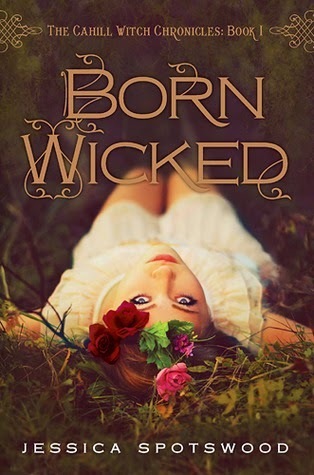
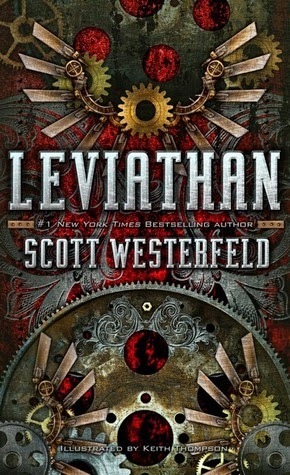
Born Wicked by Jessica Spotswood
In an alternate New England of 1900, where the Brotherhood dominates and controls society, sixteen-year-old Cate Cahill has struggled since her mother's death to keep secret that she and her younger sisters are witches, but when a governess arrives from the Sisterhood, everything changes.Divergence: There isn't a particular point of divergence that I can find. Steph Su's review indicates that the novel doesn't give one. | Sequels: Star Cursed, Sisters' Fate
Leviathan by Scott Westerfeld
In an alternate 1914 Europe, fifteen-year-old Austrian Prince Alek, on the run from the Clanker Powers who are attempting to take over the globe using mechanical machinery, forms an uneasy alliance with Deryn who, disguised as a boy to join the British Air Service, is learning to fly genetically engineered beasts.
Divergence: World War I is fought by countries with special weapons never seen before: the Austro-Hungarians and Germans have automated machines called Clankers and the English have developed genetically engineered animals. | Sequels: Behemoth, Goliath
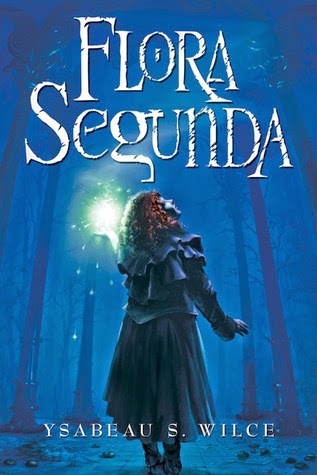
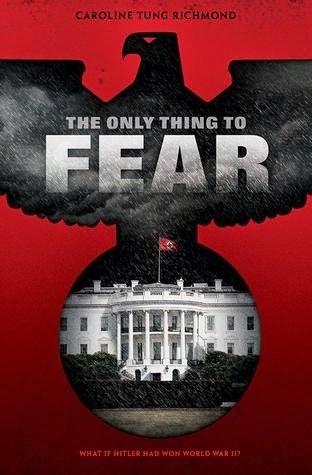
Flora Segunda by Ysabeau Wilce
Fourteen-year-old Flora Fyrdraaca, whose mother is the Warlord's Commanding General and whose father is mad, kindly helps her house's magical--and long-banished--butler, unaware that he draws strength from the Fyrdraaca will.
Divergence: Wilce herself has said that Califa is not based on any one place, but readers say it reads like a version of California that has been conquered by an Aztec-like culture. | Sequels: Flora's Dare, Flora's Fury
The Only Thing to Fear by Caroline Tung Richmond
It's been nearly 80 years since the Allies lost WWII in a crushing defeat against Hitler's genetically engineered super soldiers. America has been carved up by the victors, and 16-year-old Zara lives a life of oppression in the Eastern America Territories. A revolution is growing, and a rogue rebel group is plotting a deadly coup. Zara might hold the key to taking down the Führer for good, but it also might be the very thing that destroys her. (Goodreads synopsis; title forthcoming in September 2014)
Divergence: Hitler/Germany wins World War II.






 Related StoriesGet Genrefied: Historical FantasyGet Genrefied: Fairy Tale Re-tellingsFantasy Without Magic
Related StoriesGet Genrefied: Historical FantasyGet Genrefied: Fairy Tale Re-tellingsFantasy Without Magic
Definition & OverviewAlternate history is a subgenre of science fiction. But: a lot of readers think defining alternate history as science fiction is problematic, since alternate history doesn't really have to involve science at all. A more accurate definition (or at least a definition that causes fewer arguments!) may be to call it a subgenre of speculative fiction, which is a large, umbrella term that encompasses all of science fiction, fantasy, and related categories. Speculative fiction really gets to the root of what alternate history is, in my mind: speculation about what if.
Alternate history in particular asks us to consider what our world would be like if something happened differently in the past. This different event is called the point of divergence. Some common points of divergence that writers come back to over and over again include: the Americans losing the Revolutionary War, the Germans winning World War II, the South winning the Civil War (or any differing outcome in a large military conflict, really), JFK or Lincoln not being assassinated, and so on. Usually the books focus on an event that most people are familiar with, but not always. Sometimes the plot revolves around something else entirely, and the point of divergence is merely backdrop.
Alternate history has been fairly popular among adult audiences for quite some time. Harry Turtledove, who wrote Guns of the South (among many, many others), is possibly the most well-known alternate history novelist for adults. Others the average reader may recognize are Cherie Priest's Boneshaker series, Jo Walton's Small Change series, and Naomi Novik's Temeraire series.
There are fewer examples in YA, but they exist. Often they're crossovers with other subgenres, usually steampunk, time travel, or stories about parallel universes. Often characters start out in our own world and travel back in time to change history or find a portal to a parallel universe where things are different. And of course, steampunk is a huge source for alternate history - it's possible to make an argument that steampunk is by definition alternate history. Other crossovers are possible, too, such as a crossover with fantasy where the introduction of magic at a certain point in time alters history in some way.
Joan Aiken's The Wolves of Willoughby Chase is a classic example of children's alternate history, though I know when I first read it as a child, I had no idea it belonged in that subgenre. It's set in 1830s England ruled by a Stuart King by the name of James III. This is a prime example of a book where knowing the history isn't essential, but it certainly deepens the reader's enjoyment.
My favorite book series of all time, His Dark Materials by Philip Pullman, can also be called alternate history after a fashion. The first book is set in a parallel universe to ours, where the religion of England developed much differently than it did in our own world, making a big impact upon society. Parallel universes are a great way to incorporate alternate history, usually causing the reader to consider alternate events in direct contrast to how those events actually played out.
Alternate history appeals to history buffs, of course, but also to those readers who just love to ask "what if?" They're a natural draw for SFF fans who love world-building and can generate a lot of intense fan discussion.
(Note: Alternate history is not historical fiction that simply introduces a fictional character. That's not enough. In order for the story to be alternate history, it has to change an event, and that change has to have an effect on the course of events afterward.)
ResourcesUchronia is an impressively huge bibliography of alternate history titles, including novels, short stories, and essays. Unfortunately, while they include children's and YA titles, they don't have a way to search for those specifically (and a number of titles from my list below are not there at all). You can browse by author, language, series, and divergence. It's a fun discovery tool for fans, but perhaps not terrific for someone looking for books just for younger readers - unless they already know a title or author. On the Uchronia page, you'll also find a link to the Sidewise Awards for Alternate History.
These are usually presented at the World Science Fiction Convention each year. While children's and YA titles are considered (you'll find that Nation by Terry Pratchett was shortlisted in 2008), the vast majority of winners and honorees are adult titles. Liz Burns' Alternate History post from 2010 gives a good overview of the subgenre. Chasing Ray has a roundup of blog posts and good reads from across the web about steampunk and alternate history. She hosted a celebration of the subgenre(s) in 2010 (Liz's post is included), and there are tons of great resources here. This Day in Alternate History may not be terribly useful to you in your day job, but it's fun to play around with.Booklist Because this subgenre is much smaller than others we've covered, the list below goes back about ten years. I'm hoping to discover more young adult books that fit this category - hit me with 'em if you've got 'em. Synopses are from Worldcat. In addition to the usual listing of sequels and links to reviews, I've also included some information about the particular divergence in history that the novel addresses.


White Cat by Holly Black
When Cassel Sharpe discovers that his older brothers have used him to carry out their criminal schemes and then stolen his memories, he figures out a way to turn their evil machinations against them.
Divergence: Magic exists and was banned in 1929, much like alcohol was banned in 1919, contributing to the rise of organized crime in the United States. | Sequels: Red Glove, Black Heart | Kimberly's Reviews: White Cat, Red Glove, Black Heart
The Year of the Hangman by Gary Blackwood
In 1777, having been kidnapped and taken forcibly from England to the American colonies, fifteen-year-old Creighton becomes part of developments in the political unrest there that may spell defeat for the patriots and change the course of history.
Divergence: The British win the American Revolutionary War in 1776.


The Inventor's Secret by Andrea Cremer
In an alternate nineteenth-century America that is still a colony of Britain's industrial empire, sixteen-year-old Charlotte and her fellow refugees' struggle to survive is interrupted by a newcomer with no memory, bearing secrets about a terrible future.Divergence: The American Revolutionary War never happened and Britain's empire continued to expand. | Sequels: None yet, but it's the beginning of a series, so expect them.
The Explosionist by Jenny Davidson (sequel: Invisible Things)
In Scotland in the 1930s, fifteen-year-old Sophie, her friend Mikael, and her great-aunt Tabitha are caught up in a murder mystery involving terrorists and suicide-bombers whose plans have world-shaping consequences.Divergence: Napoleon wins the Battle of Waterloo, creating a group of totalitarian European states that are at odds with a group of independent northern European countries. | Sequel: Invisible Things


Plus One by Elizabeth Fama
In an alternate United States where Day and Night populations are forced to lead separate--but not equal--lives, a desperate Night girl falls for a seemingly privileged Day boy and places them both in danger as she gets caught up in the beginnings of a resistance movement.
Divergence: The Spanish Flu epidemic of the early 20th century causes the US population to be divided into two different groups who are only allowed out during the day or the night. | Kimberly's Review: Plus One
The Iron Thorn by Caitlin Kittredge
In an alternate 1950s, mechanically gifted fifteen-year-old Aoife Grayson, whose family has a history of going mad at sixteen, must leave the totalitarian city of Lovecraft and venture into the world of magic to solve the mystery of her brother's disappearance and the mysteries surrounding her father and the Land of Thorn.
Divergence: Instead of nuclear power, magic was discovered (invented?). It's now seen as a threat by President McCarthy and his government. (I got this info from Tamora Pierce's review of the title, as I gave up on the book partway through.) | Sequels: The Nightmare Garden, The Mirrored Shard


Neverwas by Kelly Moore, Tucker Reed, and Larkin Reed
At her family's Maryland home, in a world where colonists lost the 1776 Insurrection, Sarah Parsons and her friend Jackson share visions of a different existence and, having remembered how things ought to be, plan a daring mission to set them right.
Divergence: The British win the American Revolutionary War in 1776. | Sequel: Neverwas is actually a sequel to Amber House, but Amber House doesn't focus much on alternate history (at least judging from the synopsis).
Nation by Terry Pratchett
After a devastating tsunami destroys all that they have ever known, Mau, an island boy, and Daphne, an aristocratic English girl, together with a small band of refugees, set about rebuilding their community and all the things that are important in their lives.
Divergence: In the 1860s, a strain of Russian flu kills the English king and the next 138 heirs.


Born Wicked by Jessica Spotswood
In an alternate New England of 1900, where the Brotherhood dominates and controls society, sixteen-year-old Cate Cahill has struggled since her mother's death to keep secret that she and her younger sisters are witches, but when a governess arrives from the Sisterhood, everything changes.Divergence: There isn't a particular point of divergence that I can find. Steph Su's review indicates that the novel doesn't give one. | Sequels: Star Cursed, Sisters' Fate
Leviathan by Scott Westerfeld
In an alternate 1914 Europe, fifteen-year-old Austrian Prince Alek, on the run from the Clanker Powers who are attempting to take over the globe using mechanical machinery, forms an uneasy alliance with Deryn who, disguised as a boy to join the British Air Service, is learning to fly genetically engineered beasts.
Divergence: World War I is fought by countries with special weapons never seen before: the Austro-Hungarians and Germans have automated machines called Clankers and the English have developed genetically engineered animals. | Sequels: Behemoth, Goliath


Flora Segunda by Ysabeau Wilce
Fourteen-year-old Flora Fyrdraaca, whose mother is the Warlord's Commanding General and whose father is mad, kindly helps her house's magical--and long-banished--butler, unaware that he draws strength from the Fyrdraaca will.
Divergence: Wilce herself has said that Califa is not based on any one place, but readers say it reads like a version of California that has been conquered by an Aztec-like culture. | Sequels: Flora's Dare, Flora's Fury
The Only Thing to Fear by Caroline Tung Richmond
It's been nearly 80 years since the Allies lost WWII in a crushing defeat against Hitler's genetically engineered super soldiers. America has been carved up by the victors, and 16-year-old Zara lives a life of oppression in the Eastern America Territories. A revolution is growing, and a rogue rebel group is plotting a deadly coup. Zara might hold the key to taking down the Führer for good, but it also might be the very thing that destroys her. (Goodreads synopsis; title forthcoming in September 2014)
Divergence: Hitler/Germany wins World War II.







 Related StoriesGet Genrefied: Historical FantasyGet Genrefied: Fairy Tale Re-tellingsFantasy Without Magic
Related StoriesGet Genrefied: Historical FantasyGet Genrefied: Fairy Tale Re-tellingsFantasy Without Magic
Published on July 01, 2014 22:00



